
Subscription Offers
Give a Gift


The Maiden Voyage of the Queen Mary
Richard Cavendish describes the maiden voyage of the Queen Mary on May 27th, 1936.
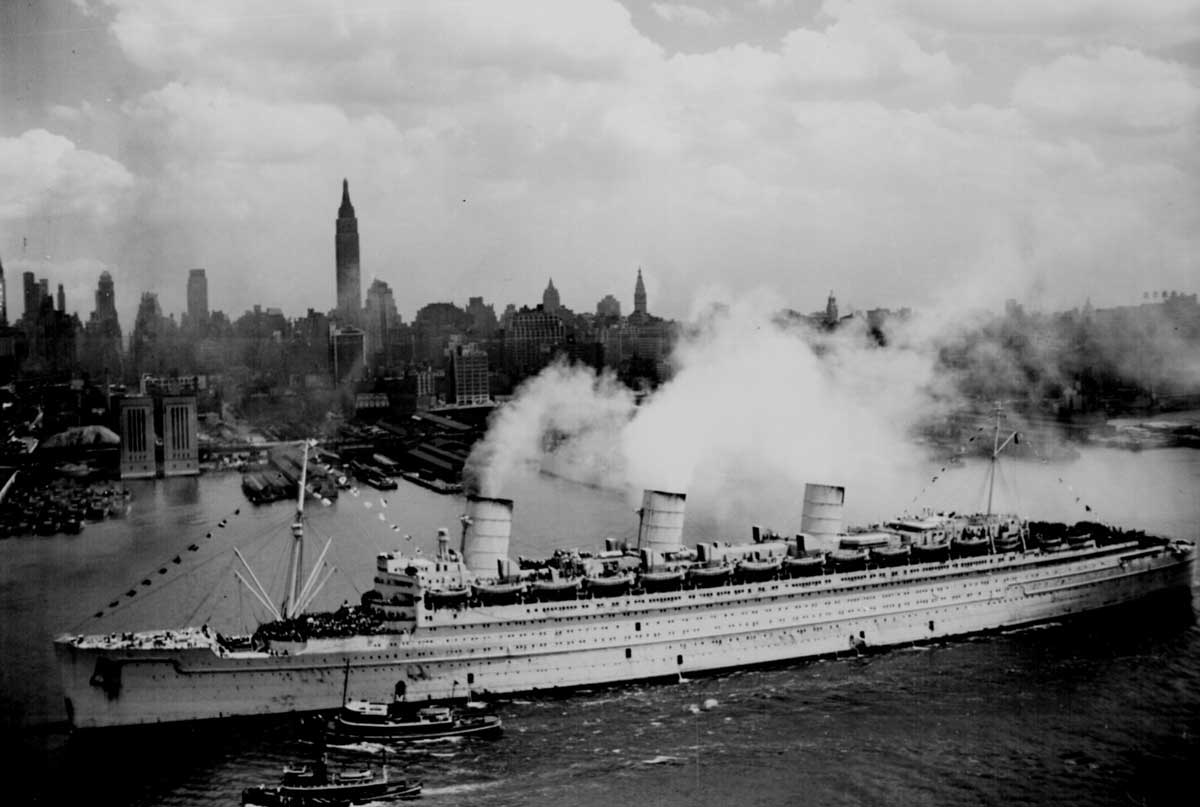
According to legend while the Cunard-White Star Line’s new Hull Number 534 was under construction at the John Brown and Company’s shipworks on the Clyde no women were allowed anywhere near it in case a feminine presence should distract a male worker from a delicate task at a critical moment. There were in fact many problems, but in the end the new vessel was formally launched with all proper ceremony in pouring rain on September 26th, 1934 by a woman: Queen Mary herself.
The 80,000-ton liner had been built in the teeth of the Great Depression to replace the ageing Mauretania and compete with British, German and French rivals on the Atlantic passage. Her keel was laid down in January 1931, but work had to be halted in December because Cunard had run out of money. The company turned to the government, which eventually produced a loan on condition that Cunard merged with its main British rival, the White Star Line, which was also in severe financial difficulty.
The Queen Mary boasted a top speed of more than 30 knots and a crew of 1,100, which was more than one for every two of her full complement of 2,100 passengers. With a stylish Art Deco interior, she had an indoor swimming pool, a library, a children’s nursery and a kennel for the passengers’ dogs. By May 1936 she was at last in Southampton ready for her maiden voyage to Cherbourg and then across the Atlantic. Supplies loaded included 50,000 lbs of fresh meat, 50,000 eggs, 14,500 bottles of wine and 25,000 packets of cigarettes.
Excited crowds watched the ship leave, a band played and an armada of vessels escorted her out of Southampton harbour. Fog prevented any hope of an Atlantic passage in record time and the ship was found to roll alarmingly and require far more handrails. At its worst, apparently, you could walk along a corridor with one foot on the wall.
The Queen Mary reached New York harbour on the morning of June 1st. Admiring crowds watched her make her way to her berth as bands played her in and many paid a dollar to charity to see round her. Cunard-White Star’s publicity department made much play of the approving comments from American publications: ‘A new peak in luxury at sea’ ( New York Times ); ‘Just about the most beautiful ship afloat’ ( The New Yorker ); ‘Regal a ship as ever ruled the waves’ ( New York American ). In August the Queen Mary took the coveted ‘blue riband’ of the Atlantic with a crossing in record time and the ensuing rivalry between her and the French Normandie would be constantly in the news for the rest of the decade.
Popular articles
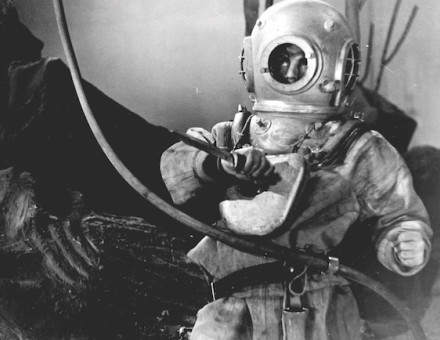
Catching Nessie on Film

How the CCP is Closing China

- Hotel Rooms Choose from 200 original first class staterooms and suites Specials & Packages Packages & Special Offers Services & Amenities Modern amenities and world-class service Fitness Room Rejuvenate with our fitness options
- Attractions Tours & Exhibits Get an up close and personal look at the Queen Mary with our exciting tours & exhibits Summer Event Series Explore exciting activities and special events on The Queen Mary all summer long Fourth of July Celebration Celebrate an all-American 4th of July aboard The Queen Mary! Queen Mary Heritage Foundation Membership Experience everything the Queen Mary has to offer with a tour package
- Dining Casual Dining Enjoy inspired meals and quick bites at our restaurants Chelsea Chowder House A contemporary restaurant offering memorable seafood dishes Bars Enjoy the 1930's classic sophistication of the Queen Mary bars Royal Sunday Brunch A local favorite, voted “Best Brunch” by OpenTable Group Dining Distinct dining options for groups of 15 or more
- Meetings & Weddings Meetings Explore one of the most unique meeting and conference venues in Southern California Weddings The Queen Mary has been host to unforgettable weddings for over 70 years Socials The Queen Mary is the ideal location for any social occasion Event Spaces Over 80,000 square feet of meeting and exhibit space across 14 Art Deco salons
- History Timeline Re-live the Queen Mary’s rich history, from her ground-breaking construction to today Stats & Fun Facts Everything you ever wanted to know about the Queen Mary Design & Preservation Learn about the era of elegant Art Deco design and how the Queen Mary is maintained with preservation projects Press Releases Press Releases about the Queen Mary Amateur Radio Discover the on-board radio stations starting in the 1960s
- Visit Hours & Parking Find open times for the Queen Mary and its dining and parking. On-Board Shopping An array of unique shops featuring souvenirs, one-of-a-kind treasures, clothing, memorabilia, historic documents, artwork and more Nearby Attractions The Queen Mary is a great central hub to all of Southern California’s most popular attractions Directions Your guide to getting to the Queen Mary
- What's On Deck
- Book Now Room Tour
The Last Great Cruise of the R.M.S. Queen Mary

The Queen Mary lay in the Western docks in Southampton. Captain John Treasure Jones anxiously awaited the appointed time that he would sail his beautiful ship from England for the very last time. This also would be his last voyage before retiring from the sea and he knew it would be one of the most challenging of his career.
As it was in 1936 for the Maiden Voyage, the Royal Marine Band was on hand to play the ship away. Passengers were crowding the decks, and streamers were everywhere. At 9:42 a.m. the port propeller started turning, and ropes holding the ship to Great Britain were quickly hoisted inboard. Ships of all shapes and sizes blew whistle salutes to the departing monarch. Captain Jones replied to each of them with three blasts from his mighty one ton Tyfon sirens. It was a fantastic send off! Surely this was the end of an era.

The Queen Mary would face gale force winds in the Bay of Biscay, and many were sea-sick as the great ship pitched and rolled on the rough seas. It was becoming evident to Captain Jones that the drag from the two dormant propellers was shaving a knot off her speed, thus causing problems arriving in the ports on schedule.
He would miss the tide for the arrival in Lisbon so speed was further reduced as to catch the next one. It didn't set well with some of the passengers that time in ports would have to be shortened to compensate for the slower speeds, but it was a necessary step.
Passengers were treated to many colorful retail displays once ashore in Lisbon. It was here that the ship picked up one of her last two stowaways. Stacey Miller had been backpacking through Europe when in a Lisbon waterfront bar; he heard that the Queen was sailing for California the next day. So he decided to hitch a ride home!

At dawn the Queen Mary was eased alongside the concrete seawall at Las Palmas. It would be only a brief stop where the ship was refueled and watered in preparation for the first long haul of the cruise - seven days at sea and 3,544 nautical miles to Rio. Many passengers took the opportunity to buy light clothing here in anticipation of the warm weather of the tropics. Others found the only liquor store open (it was Sunday) to stock up on cheap duty-free alcohol to save a little money. As the liner sailed closer to the equator, the hotter conditions on board got. Thousands of tons of high-tensile steel was holding the heat in like an oven.

The Queen Mary arrived in Rio de Janeiro's magnificent harbor on the afternoon of November 12th where she would lay in resplendent glory for the next three days. Passengers marveled at the beautiful harbor. Sight-seeing was never more popular than in this famous Brazilian city.
On the fourth day after sailing south from Rio, the excitement was building with everyone as the ship was getting closer to Cape Horn.
Sunday, November 20th at exactly 3:01 p.m. the ship's whistle sounded a great blast signifying the R.M.S. Queen Mary was abreast the treacherous Cape Horn! However on this day the weather was moderate and passengers enjoyed the spectacle from deck. Dutch Miller, a Long Beach Lifeguard instructor, plunged into the C Deck pool and quickly swam a lap so that he could say that he had swam around the Horn!

Upon arrival in Valparaiso, the Queen Mary had been at sea eight straight days since leaving Brazil. Passengers were looking forward to seeing the Pacific side of South America and stretching their legs. It was 6:00 p.m. November 24th when the Queen Mary heaved up the anchor for departure. Like every other port but Rio, a huge send off was accorded the liner. Ships from Germany, the Netherlands, and Japan started a deafening plethora of vibrato noise. The cruiser, Captain Black, fired an extra boiler for one long heroic blast.

The stop in Callao, Peru would be only be 36 hours, but the locals went all out in laying out their wares for Queen Marians to view. Business was brisk too, and a lot of llama and alpaca fur items were purchased by passengers. Laurence Stroud, the ship's sanitary officer, would spend the rest of the trip fumigating them for lice! Sailing north in the cool comfort of the Humboldt Current, the ship was a pleasant place to be. On to Panama!

It was warm on the afternoon of December 1st, as Captain Jones stood on his navigation bridge with the Balboa Pilot keenly observing the arrival of his ship. Their course would take them directly beneath the Thatcher Ferry bridge spanning the Pan American Highway. The foremast reaches 237 feet above the keel of the Queen Mary, and it looked as if surely the mast would strike the bridge. One lady squealed, "She’s not going to make it!" At this people began to take cover. She made it with four feet to spare and a tremendous cheer went up from the crowd onboard the ship and on the Thatcher Ferry bridge.
The Queen Mary was only in Panama over night as she had to sail on the next tide to arrive in Acapulco on time. A local band played a rousing rendition of "California here I come" as she got underway. Only one last port to go...

The Queen Mary dropped her anchor a mile off shore of Acapulco's sun drenched golden beaches. Many of the locals were out in small boats for a closer look at this stateliest of ships. The many modern high-rise hotels offered passengers air conditioned comfort and a cool place to eat and drink. Quite a few VIP's from Los Angeles were joining here for the final few days of the voyage.
Sailing from Acapulco was uneventful. Passengers were ready to get home but emotional at the thought of the end of the Queen Mary’s ocean-going days. Then on December 8th, the last day at sea, off the coast of Baja California to everyone’s delight and surprise, a brand new sleek Douglas DC-9 flew low over the Queen dropping thousands of red, white, and blue carnations. Thus repeating what veteran pilot Captain Eddie Rickenbacker had done in a DC-2 in 1936 as the ship approached New York on her maiden voyage.

In the cool of the morning of December 9, 1967 the Queen Mary was steaming serenely past San Diego. Most of her passengers were up and about in spite of the late night before. Some had even stayed up all night partying.
Not long after dawn boats of all shapes and sizes started coming out from every inlet along the coast and following in the ship's wake. The armada grew so large that the Coast Guard was brought in to shepherd them along. The U.S. Navy even sent the state of the art nuclear powered cruiser U.S.S. Long Beach to join the parade. By the time the Queen was close to Long Beach, there were an estimated 5000 small craft welcoming her home!
Finally and majestically the R.M.S. Queen Mary would enter Long Beach Harbor. Just before noon she was made fast to Pier E. At 12:16 p.m. Captain Jones rang "finish with engines" for the last time.
This magnificent liner now has been in Southern California longer than she was at sea. She has hosted some 50 million guests, and more than 12,000 weddings have been performed on board. She has become to Southern Californians what the Eifel Tower is to Parisians, what Big Ben is to Londoners and what the Statue of Liberty is to New Yorkers.
Long may the Queen Mary reign as the crown jewel of Long Beach and an icon to all Southern Californians!
Long Live the Queen!
The Maiden Voyage - 27 May, 1936
After completion, and brief trials to establish that her engines and other systems were functioning correctly, the Queen Mary arrived in Southampton for the start of her maiden voyage to New York.
- Fresh Meat: 50,000lbs
- Poultry: 20,000lbs
- Fresh Fish: 17,000lbs
- Bacon and Ham: 9,000lbs
- Sausages: 2,000lbs
- Vegetables: 50,000lbs
- Fruit: 30,000lbs
- Butter and Lard: 10,000lbs
- Eggs: 50,000
- Ice Cream: 6,000 quarts
- Wine: 14,500 bottles
- General Stores: 200,000lbs
- Potatoes: 50,000lbs
- Flour: 35,000lbs
- Beer: 20,000 bottles
- Keg Beer: 6,000 Gallons
- Cigars: 500
- Cigarettes: 25,000 packets
...and so, so much more. On this voyage, the ship also carried �2.5 million worth of gold bullion.
All was not perfect though. The main problems were to do with the ship herself. Firstly, the Queen Mary rolled from side to side a lot more than had been expected, and it was only now realised that there were no handrails for passengers to grab onto in the corridors. They had simply not been thought necessary: the models in wave tanks had not rolled. After a few voyages, workmen traveled on the ship to fit handrails to the corridors and to bolt down heavy furniture. The rolling problem was finally cured in 1956. One crewman (probably sober) reported a roll in a particularly bad storm (on a later voyage) of 44 degrees from vertical! That means you could walk with one foot on the wall and one on the floor.
Originally, no handrails were fitted in the corridors. Contrast this with today on the right
An engine problem arose at the beginning of the voyage. Some of the turbine blades had broken and come loose, and the damage was serious. The problem was the same in each of the four turbines. Nevertheless, the Queen Mary ran to New York before the matter was dealt with, but she attempted no records.
Another problem was a mysterious and very bad vibration at the stern of the vessel. The cure for this was to be expensive, with different propellers having to be designed, and strengthening posts needed between the decks. Some of the public rooms at the stern had to be rebuilt.
A flotilla of small craft met the Queen Mary in New York
In New York, the Queen Mary was met by a flotilla of small craft. After docking, she was again invaded by sightseers, this time paying a dollar each to charity. Everything that was not nailed down disappeared. One woman was arrested as she tried to take down a painting. The Queen Mary left to return to Southampton on Friday 5 June, 1936. The service had begun.
Return to History Index or go on with the history of the ship The War Years
Return to main index.
Cruising The Past Cruise News
Rms titanic – photos talen onboard on the last voyage.

RMS Queen Mary – The Maiden Voyage in 1936 – President John Kennedy
Posted by: Michael Grace January 10, 2017
The floating palace for the rich and famous: Vintage photos reveal glamor on board the Queen Mary during her maiden voyage.
First Class Dining Room
- RMS Queen Mary left Southampton on M en route to New York, the first of many transatlantic crossings.
Elizabeth Taylor walking her dogs.
- She hosted the wealthy and elite, including Winston Churchill, John F Kennedy, Elizabeth Taylor and Bob Hope
Today, the historic ship is permanently moored as a tourist attraction with a museum, hotel, cafes, and restaurants.
Joseph Kennedy and his son (future President) John F. Kennedy on board RMS Queen Mary.
- The RMS Queen Mary, a luxurious ocean liner that carried the world’s rich and famous before the dawn of the jet age, is celebrating the 80th anniversary of its maiden voyage.
English actress and singer Gertrude Lawrence (nearest to camera) and her dining companions on board the RMS Queen Mary in 1939
- One of the greatest passenger ships ever built, the 1,020ft Queen Mary left Southampton on May 27, 1936, en route to New York, the first of many transatlantic crossings that attracted the likes of Winston Churchill, John F Kennedy, TS Eliot, Elizabeth Taylor, Bob Hope and many other glamorous guests.
Passengers have boarded the Cunard-White Star Line ship Queen Mary at Southampton as she is ready to set sail on her maiden voyage to New York
- The Art Deco liner was the largest and fastest passenger ship in the world when it launched. The liner had three classes of cabins, an opulent first class dining room, ballroom, cocktail bars, a stage for music, two indoor swimming pools, a squash court, libraries, a telephone connection and a small hospital. It was the flagship of Liverpool-based Cunard-White Star Line when it left John Brown & Company’s shipyard in Clydebank, Scotland after six years of construction.
First Class passengers had a number of elegant dining options, including the veranda grill where they were entertained by a pianist
The historic Queen Mary transported Allied soldiers during World War Two and returned to passenger service until it was retired in 1967 as profits dropped and the jet age took off.
Today, the historic ship is permanently moored in Long Beach, California, where it has been preserved as a tourist attraction with a museum, hotel, restaurants and an exhibition containing some of Princess Diana’s belongings.
Popular Articles

May 1, 2024

Coulter’s Steamlined Modern Department Store Miracle Mile Los Angeles
April 3, 2024

THE LARK – All-Pullman Sleeper Train – Overnight – San Francisco to Los Angeles
April 1, 2024

California’s Old Movie Palaces New Video
March 12, 2024

Berlin’s Famous Hotel Adlon Five Stars
March 1, 2024

Judy Garland Premiere of A Star Is Born
February 14, 2024
© 2024-2025 Cruise The Past All Rights Reserved.
Any copying or reproduction of images or media herein is strictly prohibited.
- CONTACT MICHAEL GRACE
- Refine your search results by reviewing SEARCH TIPS
- Site tech support provided by Ted Angel
Please enter at least 3 characters
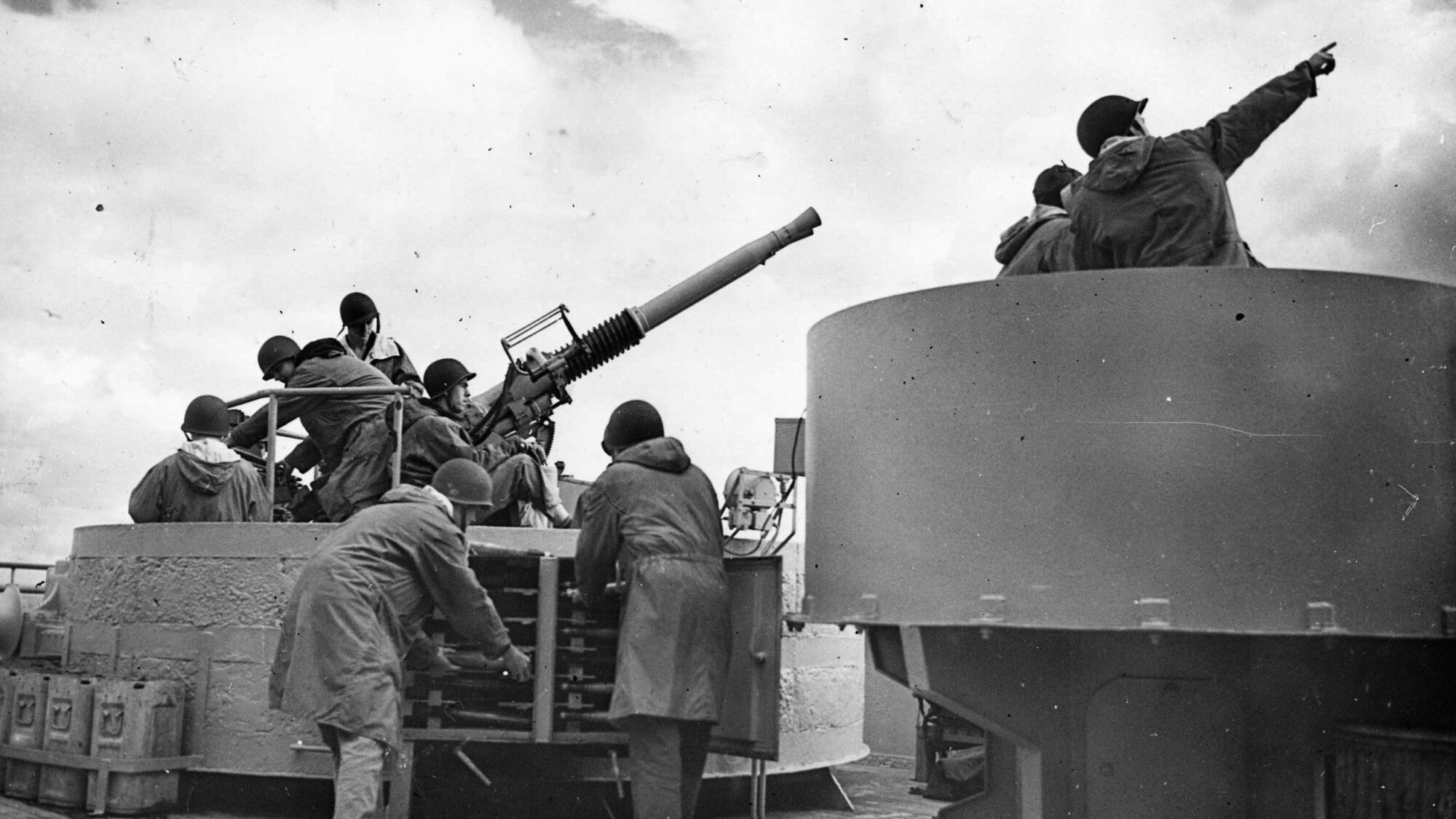
RMS Queen Mary’s War Service: Voyages to Victory
The war service of the RMS Queen Mary made a vital contribution to the success of the Allies.
This article appears in: March 2008
By Eric Niderost
The late summer of 1939 saw Great Britain teetering on the brink of war with Hitler’s Germany. The years of appeasement and vacillation, of meekly acquiescing to Hitler’s insatiable territorial demands, were over at last. Prime Minister Neville Chamberlain’s government pledged to come to Poland’s aid if it was attacked. It was clear that if the Polish crisis could not be settled amicably Europe would be at war within a matter of days. Southampton became a magnet for thousands of people seeking to escape the Continent before hostilities began. Many were Americans, who cut their holidays short for fear of being trapped on the wrong side of the Atlantic. One such “refugee” was entertainer Bob Hope and his wife, Dolores, who booked passage on the RMS Queen Mary . The Hopes were not alone, and in fact Queen Mary had a record 2,332 passengers aboard when she left Southampton on August 30, 1939.
The Queen Mary had survived the Great Depression, an economic hurricane that had once threatened her very existence. The great liner was designed to resist the fury of nature, but could the Queen Mary also weather the storms of war? Only time would tell.
Why the RMS Queen Mary Was an Instant Legend
RMS Queen Mary was Britain’s entry in the fierce transatlantic passenger trade. Commercial aviation was in its infancy in the 1920s and 1930s, leaving passenger liners the only viable way to get to Europe. Before World War I, most shipping companies made their money in steerage, transporting thousands of poor immigrants to new and hopefully better lives in America. But when Congress curtailed immigration in the early 1920s, steamship companies like Cunard faced serious financial difficulties.
The solution was to build one or two huge liners that would gradually replace older, smaller steamships on the transatlantic routes. It would be much more cost-effective. The spartan accommodations of steerage would be upgraded to a much more comfortable “third class” in order to attract middle-income passengers. The ships themselves would be the main attraction of the journey, or, as the old saying put it, “Getting there is half the fun.”
Cunard would build the first of its great new ships in the Clydeside region of Scotland. Clydeside is a stretch of the Clyde River that reaches west of Glasgow toward Gourock and the Western Approaches. John Brown and Co., Ltd., a shipbuilder of great experience and skill, was selected for the task, but the work was hardly put in hand before the Great Depression deepened and severely weakened the British economy. On December 11, 1931, all work was suspended indefinitely and 3,500 workers were laid off.
The British government stepped in, offering subsidies if Cunard merged with its great shipping rival, White Star. All parties agreed, and work resumed in April 1934, after a hiatus of a little over two years. Shipyard hull no. 534 became the Queen Mary , hailed as the largest and “stateliest” liner ever built. The ship was named after the wife of Britain’s reigning monarch, King George V. The royal couple was on hand when the ship was launched RMS Queen Mary was an instant success, a legend in its own time. Passengers were awed by its great size, measuring 1,019 feet long and displacing 80,677 tons. In peacetime, it was designed to carry 2,119 passengers and 1,035 crew. Queen Mary may have been large, but it was also incredibly fast. The ship could average around 29 knots, even faster if pushed a little.
The great steamship was the physical embodiment of Britain, an amalgam of British taste and 1930s refinement. The Art Deco style may have had its origins in France, but on Queen Mary it epitomized the British liner’s elegance and sophistication. Mahogany and other exotic woods, many from Britain’s own colonies, were used in the interior. In a very real sense Queen Mary was an expression of the island nation’s far-flung empire. The ship went into service in 1936, and in August of that year it captured the fabled “Blue Ribband” prize for the fastest transatlantic passage. Queen Mary had traveled from Southampton to New York in a record three days, 23 hours, and 57 minutes, averaging over 30 knots.
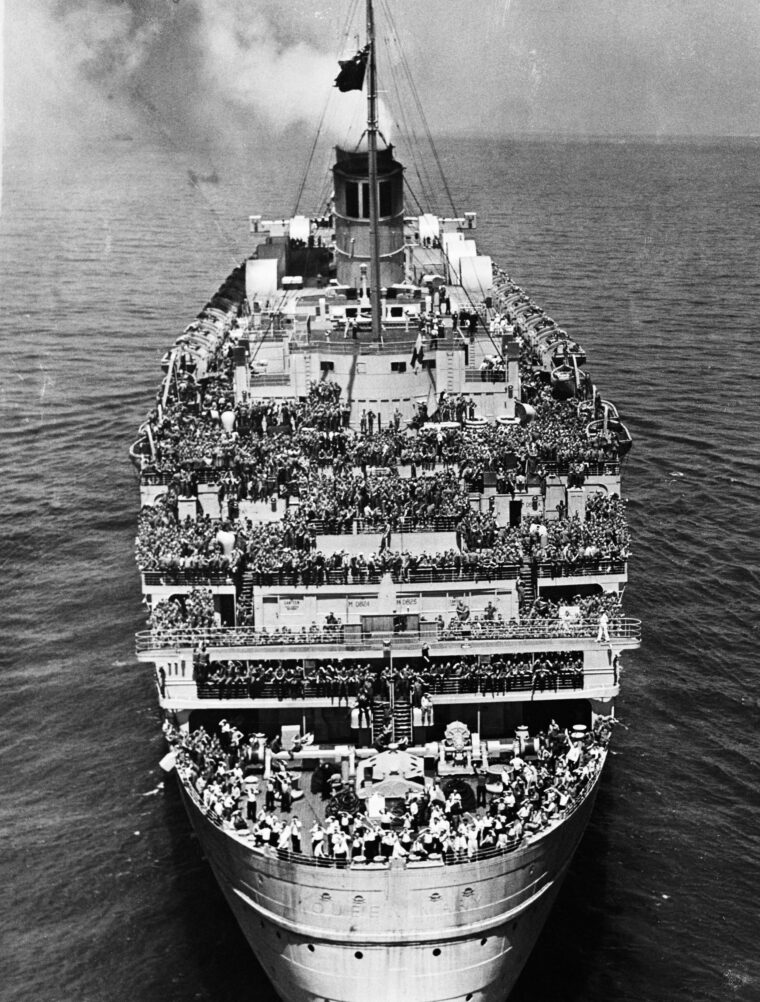
Queen Mary ’s growing fame attracted many celebrities of the period. Hollywood stars like Cary Grant could be seen in the Cabin (First) Class Dining Saloon, which featured a large intricately carved wooden map of the Atlantic Ocean, Europe, and America. Diners could follow the ship’s daily progress by observing a small crystal ship that was frequently repositioned on the map.
One Last Peacetime Voyage
The ship’s last peacetime voyage in August 1939 was anything but routine. Queen Mary ’s captain was ordered to sail about 100 miles south of her normal route as a precaution against lurking German submarines. On September 1, the German Army invaded Poland, and shortly before midnight on September 2, just a few hours after Britain’s ultimatum was delivered to Germany, Queen Mary received an urgent dispatch from the Admiralty. The ship was ordered to “take all necessary precautions” to guard against submarine attack.
The crew worked with a will, painting over portholes and rigging blackout curtains on doorways. Extra lookouts kept eyes peeled for periscopes or the telltale white streak of a torpedo wake. Tension grew, and the fear among passengers was palpable. The liner Athena had been torpedoed a short time earlier, which did nothing to lighten the mood. In an effort to calm nerves, the captain asked Bob Hope to do a show for his fellow travelers.
The comedian rose to the occasion, and soon had passengers roaring with laughter. Noting the crowded conditions, Hope did a parody of his signature tune, “Thanks for the Memory.” While his audience laughed, Hope sang, “Thanks for the memory, Some folks slept on the floor, Some in the corridor, But I was more exclusive, My room had “Gents” above the door.…”
Queen Mary arrived safely at Cunard’s Pier 90 in New York City on September 5, and was ordered to stay put for the foreseeable future. Most of the crew went back to Britain to serve in the war, leaving only a small maintenance crew aboard. The liner was well guarded against sabotage, even though the United States was neutral at the time. There was a fear—real or imagined—that German spies might try to damage the mighty vessel.
Converted For Wartime Use
In March 1940, the Queen Elizabeth joined her sister ship, Queen Mary , in New York. The newer ship was unfinished and less vulnerable in the United States. Both vessels would perform a vital service in carrying thousands of troops to far-flung battlefronts around the world.
The Queen Mary stayed in New York for the next seven months, idle and seemingly forgotten. But this neglect was more apparent than real. Back home in Britain a debate raged in the highest circles of government over what to do with the two Queens . Some suggested that they were “white elephants,” and one member of Parliament seriously suggested they be sold. Besides being vulnerable to attack—or so it seemed at the time—the Queen Mary and her sister ship would eat up tons of fuel oil that might be better used in warships.
Saner heads prevailed, and on March 1, 1940, Queen Mary was officially called up for the duration. As a first step, her prewar livery of white, black, and Cunard red was replaced by a drab coat of what the Royal Navy called “Light Sea Gray.” This camouflage, together with her great speed, would be Queen Mary ’s principal defense against marauding German U-boats.
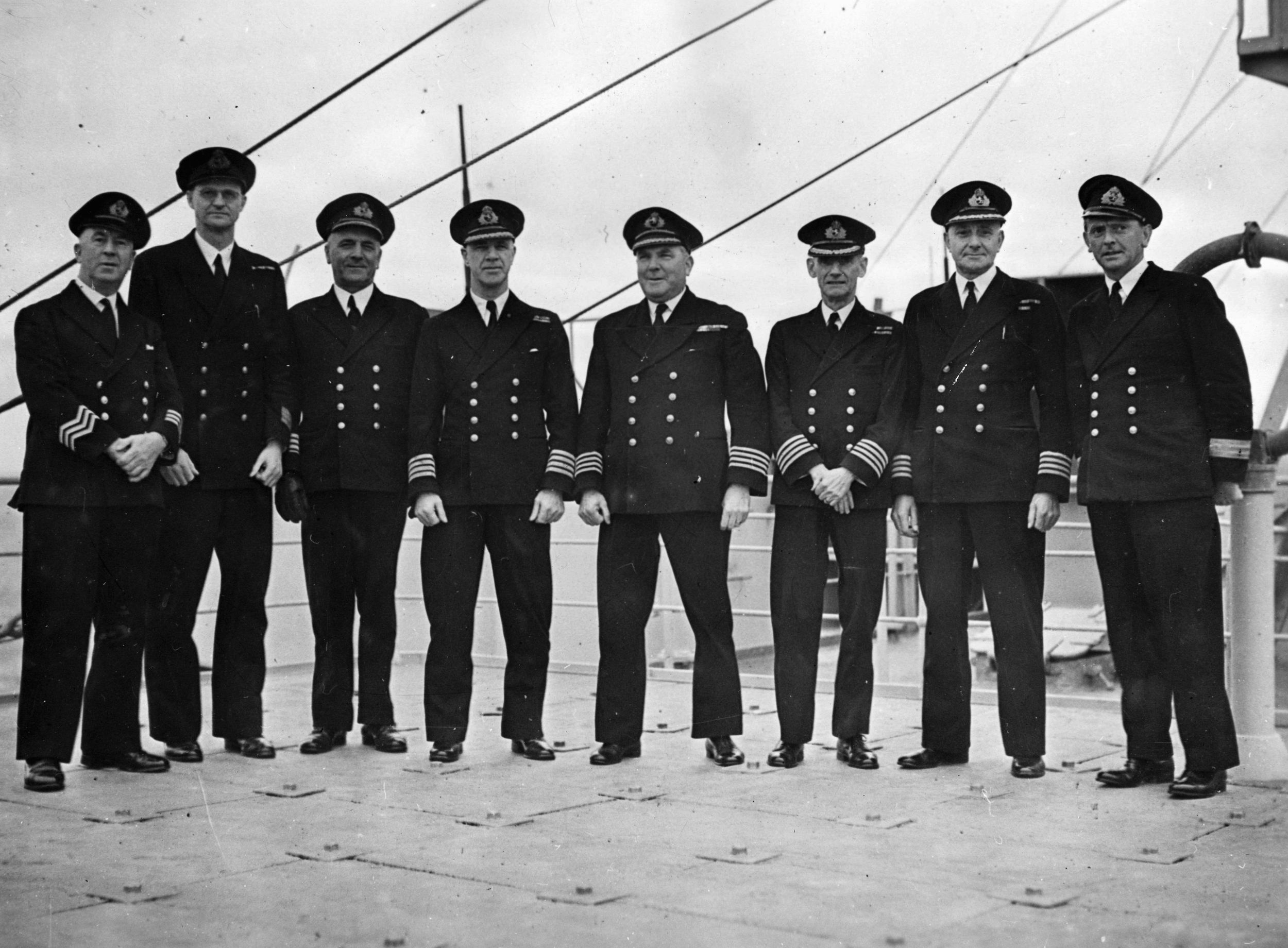
Queen Mary left New York on March 21, 1940, bound for Australia via the Cape of Good Hope. Once down under, the ship would undergo a major refit to turn her into a troopship. The liner reached Sydney on April 17, a voyage of some 14,000 miles made at an average speed of 27.2 knots. Once in Australia, Queen Mary was taken to the Cockatoo Docks and Engineering Co. pier to undergo its transformation. When the workmen were finished, Queen Mary could take 5,500 passengers.
The RMS Queen Mary ‘s Maiden Voyage as a Troopship
On May 4, 1940, Queen Mary left Sydney with 5,000 Aussie troops aboard. The great liner joined other “drafted” passenger ships similarly loaded with equipment and men, forming a huge convoy protected by the Royal Australian Navy. This first maiden troopship voyage was completed successfully, but the Queen’s arrival back in Britain coincided with the war’s darkest days. That spring, Hitler unleashed the blitzkrieg on Western Europe, overrunning Holland, Belgium, and ultimately France in a matter of weeks.
The British Expeditionary Force was pushed to the coast and barely escaped annihilation in the celebrated “ Miracle of Dunkirk .” The British Army had escaped destruction but was forced to leave all its vehicles and heavy weapons behind. The island nation, now truly alone, braced itself for a possible invasion. There was only one bright spot in this litany of gloom: Winston Churchill had replaced the inept Neville Chamberlain as prime minister. Churchill was a man who truly appreciated the importance of Queen Mary and her sister ship.
Defending Against Sea Mines
Queen Mary ’s primary mission would be to ferry troops to battlefronts where they were most needed, but she needed additional modifications. The ship was dispatched to Singapore, Britain’s great eastern bastion, where the transformations could take place. Japan, already embroiled in a major land war in China, soon occupied French Indochina. Tokyo’s ambitions knew no bounds, and its clear goal was nothing less than the control of East Asia.
The Japanese were careful to maintain peaceful relations with Britain and the United States, but war with the western powers was clearly on the horizon. In the meantime, the Queen Mary ’s focus was the worsening crisis in the Middle East. Italian dictator Benito Mussolini hoped to carve out a new Roman Empire in the Middle East by invading British-held Egypt, which was the site of the Suez Canal, Britain’s lifeline to India and the Far East, a jugular vein of communications that had to be held at all costs. Mussolini’s badly led forces were easily routed, but Hitler upped the ante by sending the German Afrika Korps to aid his ally.
Queen Mary arrived in Singapore on August 5, 1940, and slipped into a huge Admiralty drydock for the scheduled modifications. A degaussing coil was wrapped lengthwise around the liner’s exposed hull as protection against German magnetic mines. The coil consisted of five miles of copper wire that, when charged with electric current, effectively neutralized the ship’s magnetic field.
The Route From Sydney to Bombay
After the extensive refit, Sydney became Queen Mary ’s main base throughout 1941. In this period the liner shuttled troops from Australia to the Middle East, although she did not make the complete journey to the battlefronts. The ship usually stopped at Bombay, where the troops would transfer to smaller vessels that took them to Egypt.
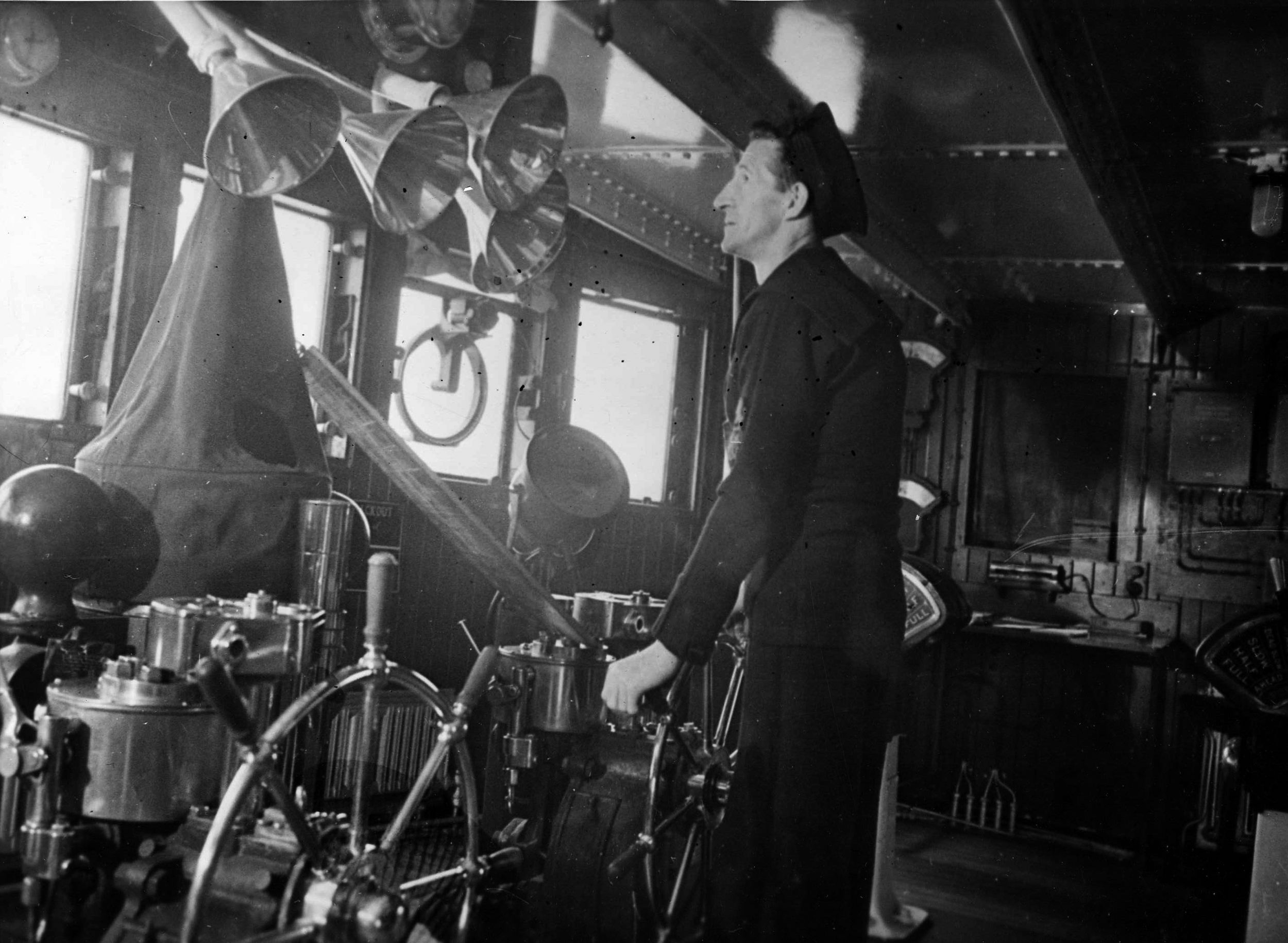
The open ocean is one thing, but the relatively narrow confines of the Red Sea exposed the ship to too much risk. If the liner was sunk, the psychological blow to morale—not to mention the loss of life—would have been devastating. On a strategic level, Britain would lose almost 20 percent of its troop-carrying capacity during the war. It was the kind of percentage that might tip the scales in Germany’s favor.
Australian troops were tough and hearty, with a sense of humor that delighted in poking fun at the pretensions of themselves and others. They needed this irreverent wit because tedious weeks aboard the Queen Mary could try the patience of a saint. The war with Japan was still months into the future, and the chance of encountering a “rogue” German U-boat was remote indeed. Unfortunately, the Queen Mary and Queen Elizabeth were designed for the cold North Atlantic, not the blistering heat of the tropics.
Torrid temperatures, not German torpedoes, became the chief threat in the summer months of 1941. Extra fans were jerry-rigged all around the ship, and saltwater showers were installed above decks. Awnings also were spread in an effort to deflect the sun’s burning rays. Unfortunately, these stopgap measures could not prevent temperatures rising well past the 100-degree range. Cases of heatstroke and heat exhaustion were multiplied, and on occasion there were one or two deaths from the oven-like temperatures.
The Queen Mary Under American Control
The December 7, 1941, Japanese attack on Pearl Harbor widened the war and brought the United States into the conflict on the Allied side. Churchill hurried across the Atlantic to confer with his new partners, although in truth the British and Americans had been cooperating with each other long before the formal declarations of war.
President Franklin D. Roosevelt and his advisers cordially welcomed Churchill that grim December, then set to work devising a strategy to deal with a two-front, two-ocean war. The Anglo-Americans agreed on a Germany-first policy, but where would the Queen Mary and Queen Elizabeth fit into the new realities of war? Their services as troopships were more needed than ever, but obviously the United States far outstripped Great Britain in terms of resources and manpower.
It was agreed that the Queens would be turned over to the Americans in a kind of reverse Lend-Lease, but that British Cunard crews would continue to run the ships under American operational control. But now that America was in the war, its troops were urgently needed, especially in the Far East. The Japanese were sweeping through Asia almost unchecked, and Australia was almost defenseless against Japanese aggression.
U.S. Army Chief of Staff General George C. Marshall met with Churchill to discuss how many people the Queens could carry effectively. Marshall had the idea of shipping at least 10,000 men, perhaps even 15,000, aboard one vessel. The figure is significant because a single division could number 15,000 troops.
Queen Mary ’s lifeboats could carry a maximum of about 3,000 souls. Add all available rafts and floats, and the number might boost to 8,000. The liner often was unescorted because her speed was considered her best defense. But if the Queen Mary was torpedoed, roughly half of her passengers might meet the same fate as those aboard the ill-fated Titanic —death by drowning or hypothermia.
Churchill was a complete romantic who loved pageantry, tradition, and the past. Churchill was also a hard-headed realist who did not shrink from difficult and even controversial decisions if the need arose. The prime minister’s reply to Marshall was unequivocal: “I can only tell you what WE would do. You must judge for yourselves the risks you will run. If it were the direct part of an actual operation, we should put all on board they could carry…. It is for you to decide.”
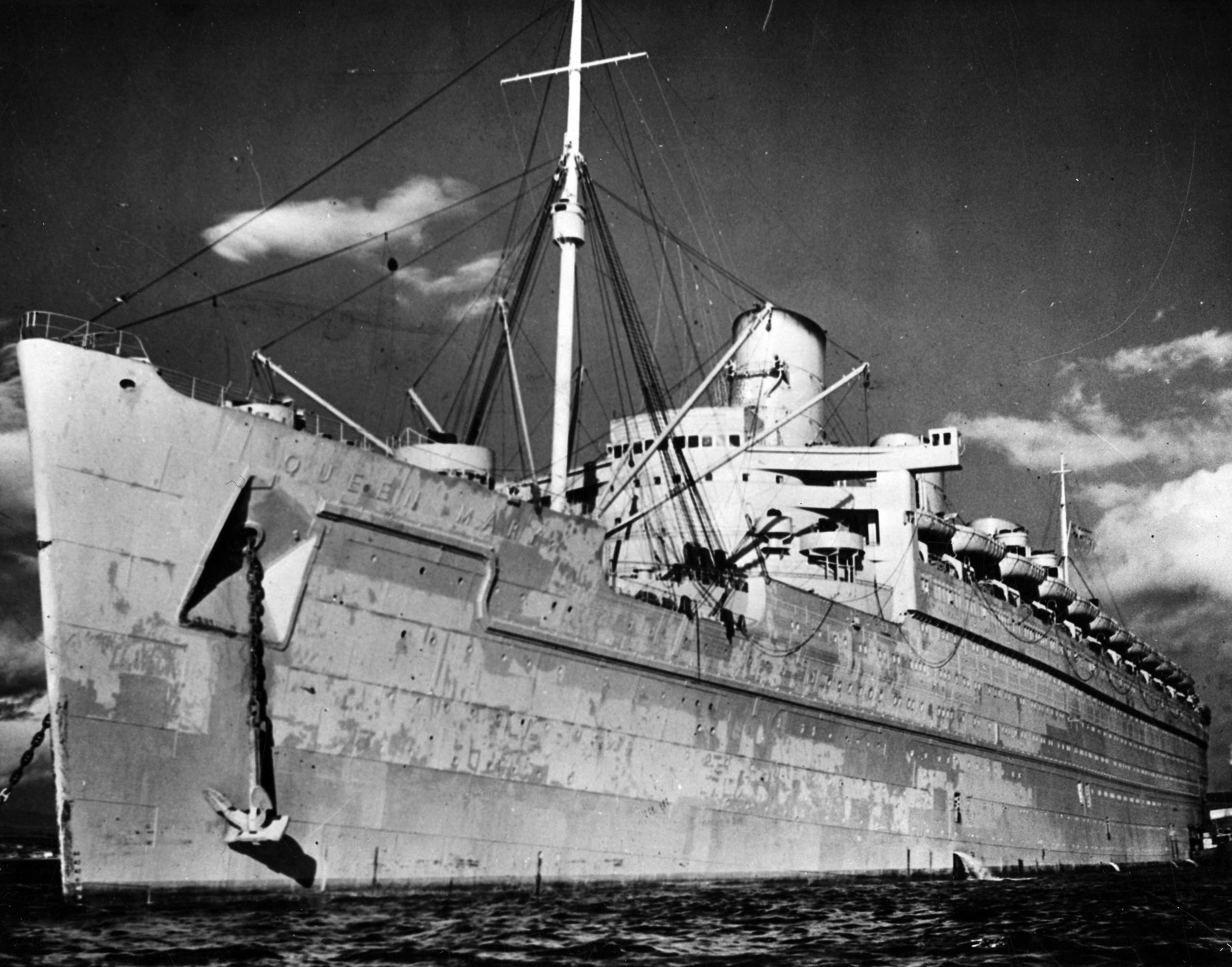
In the end, the Queen Mary would carry 15,000 passengers, but not right away. In January 1942, the ship was in Boston undergoing another refit that would boost her passenger load from 5,000 to 8,500. The ship needed to upgrade her defensive capabilities as well. Before 1942, she had been protected by a single 4-inch gun and a few scattered Vickers and Lewis machine guns.
Now, she was to have the armaments roughly equivalent to a light cruiser. The list included 40mm cannon in five double mounts sited fore and aft and 24 single-barrel cannon emplaced in steel tub mounts along the ship’s upper structure. Six 3-inch guns were also aboard, as well as two antiaircraft rocket launchers near the aft funnel.
U-Boats on the Hunt
When the job was complete, the Queen Mary embarked 8,398 American soldiers, most of them artillerymen or ordnance troops of one kind of another. Her destination was Sydney via Trinidad, Rio de Janeiro, Cape Town, and Freemantle. The liner left Boston on February 18, 1942, under bright blue skies that seemed to augur a safe passage. In fact, this trip was one of the most dangerous of the Queen Mary ’s entire wartime service. The period from January to August 1942 was fondly remembered by German submariners as “the happy time,” a period when they were winning the vital Battle of the Atlantic. In these eight months no less than 609 Allied ships went to the bottom, a staggering 3.1 million tons in all. The Queen Mary would have been the greatest prize of all. Adolf Hitler offered a million reichsmarks, about $250,000, and the Iron Cross with Oak Leaves to any submarine captain who could successfully torpedo the Queen Mary .
Increased U-boat activity around Trinidad forced a slight change in plans. The Queen Mary was diverted to Key West, and it was there that Captain James Bisset took command of the vessel. A 35-year veteran of the sea, he was nevertheless amazed by the Queen Mary ’s great size. “Gazing up at her,” he later recalled, “I felt overawed at the responsibility soon to be mine….”
Once on the bridge, Bisset had little time for such reflections. The Queen Mary sailed on the westward side of Cuba, then east into the Caribbean, finally breaking into the wide Atlantic via the Anegada Passage. Bisset had no idea that two German submarines, U-161 and U-129 , were not far behind following the same route.
The Queen Mary ’s radio operator picked up a distress signal from a torpedoed tanker only 10 miles astern of the giant liner. In fact, this same tanker had passed the Queen Mary only 45 minutes earlier. Captain Bisset ordered full speed ahead, and the liner safely reached Rio on March 6, 1942.
The Queen Mary was in even greater danger in Rio. Count Edmondo di Robilant headed an Italian spy ring in South America, and according to some versions of the story had actually obtained a copy of the ship’s sailing schedule. Robilant or one of his confederates secretly radioed German submarines with the intelligence that the great ship was anchored at Rio, but luckily the message was intercepted by Allied intelligence.
Captain Bisset was told to refuel quickly and leave port as soon as possible. Forewarned, the ship left Rio several hours before its scheduled departure. The Queen Mary escaped in the nick of time. An oil tanker that left port about the time of the liner’s original sailing was torpedoed a few miles out to sea. It looked as if a German submarine had been lurking in ambush.
The Germans refused to believe that the Queen Mary had slipped the net; in fact they proudly announced the sinking of the great ship. Hearing this, Captain Bisset remarked to his communications officer, “Keep this news under your hat. Don’t let the troops know we’ve been sunk. It might worry them!”
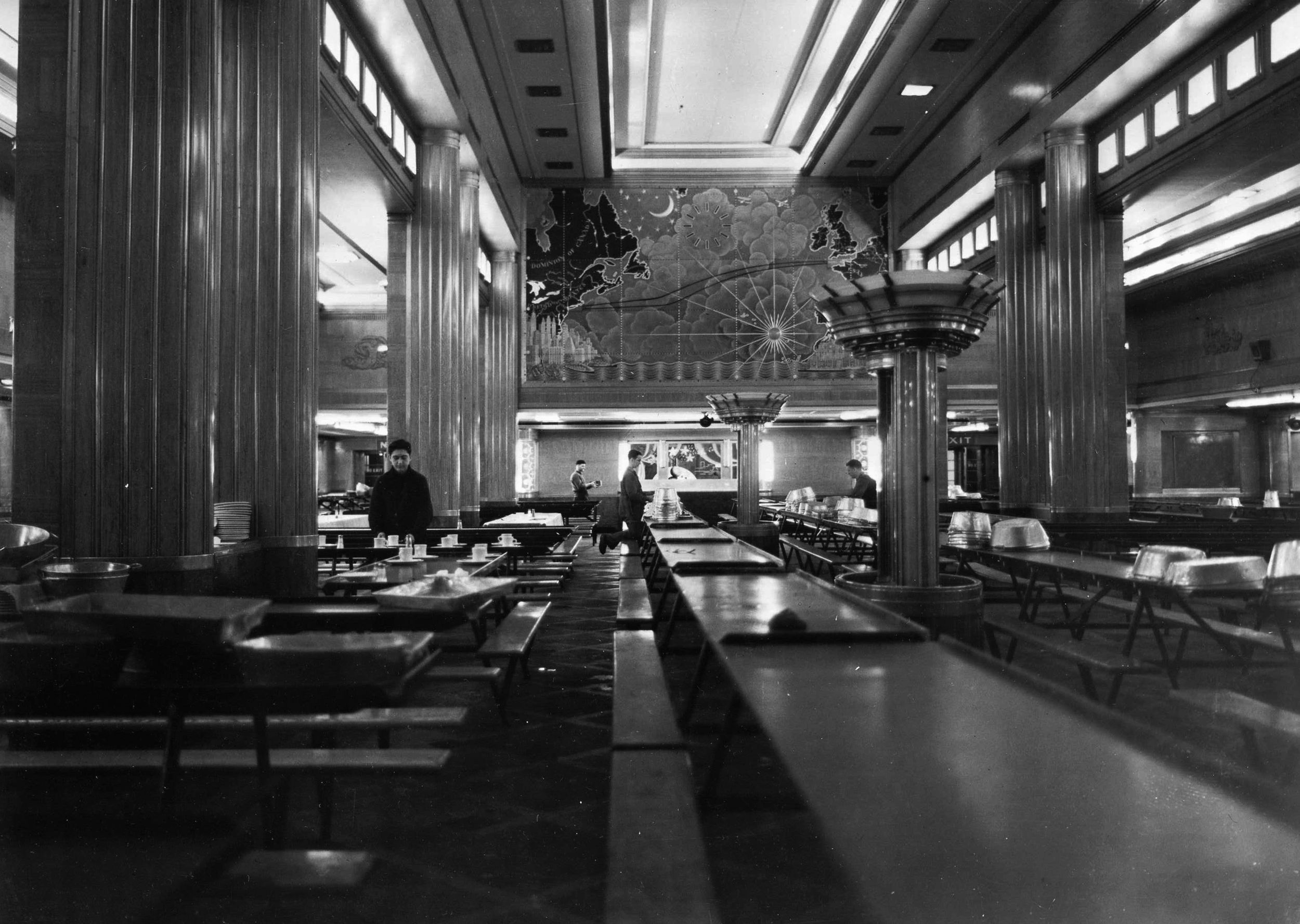
The rest of the trip was uneventful, and the Queen Mary successfully reached Australia, where the Americans disembarked safely. The Yanks had behaved themselves but left distinctively American “calling cards”—wads of chewing gum stuck from stem to stern. Captain Bisset quickly revised the rules, adding chewing gum to the list of banned substances.
A GI Shuttle in the European Theater
By 1943, planning for Operation Overlord, the Allied invasion of occupied France, was well underway. Earlier refitted to accommodate 15,000 men, the Queen Mary made a significant contribution to the Allied build-up that preceded the invasion. In essence, the ship could carry an entire division across the ocean in less than six days.
Now permanently assigned to the European Theater, the giant vessel became a “GI shuttle” that ferried thousands upon thousands of American and Canadian troops across the Atlantic to Great Britain. It was decided that the Queen Mary could take 15,000 men only during the summer months, when the seas were calmer. The ship might weather choppy seas or a raging winter storm, but the packed men would be so tossed about that broken arms and other injuries could result. The idea was to deliver the men in one piece!
Gourock, Scotland, not far from where she was launched, was slated to be the Queen Mary ’s home port for the duration. Southampton was the liner’s normal base in peacetime, but it was too near German-occupied France and subject to enemy air raids. Liverpool was another alternative, but it had also experienced German bombing. Gourock was beyond reach to all but a handful of German long-range aircraft types.
A Good Night’s Sleep on the Transatlantic Voyage
It was quickly realized that new rules and new procedures had to be adopted for the 15,000-man voyages, or all would dissolve into chaos. The ship was divided into three vertical sections—Red, White, and Blue—and every soldier coming aboard was given a colored button corresponding to the section where his unit was assigned. Visiting other sections was strictly forbidden. The Red section stretched from the bow of the ship aft to the number three stairway, excluding the sun deck. White covered everything between number three and number four stairways, and included the sun deck. Blue was from the number four stairway to the stern.
This overcrowding was feasible thanks in part to the standee bunks, which had replaced the ship’s earlier hammocks. Standee bunks were tiered sleeping spaces stacked up as high as six feet. There was only an 18-inch clearance between each standee, which did not help any soldiers who might be claustrophobic. Sleeping was done on a rotation basis, with each bunk shared by the men. In addition, at any given time one-third of the troops would sleep “topside” on the open deck.
The rotation system assured that each man slept inside two nights and then outside two nights. Sleeping topside was feasible only in the summer months because winters on the North Atlantic are too cold. Most GIs actually preferred outside, which was less dank and claustrophobic. Besides, the men reasoned rightly that those topside would have a better chance for survival if the ship was torpedoed.
Sergeant Jerry Cerrachio got some good advice during one of the Queen Mary ’s outbound voyages to Britain. Since the upper standees were fairly high, it was only natural to select a lower bunk for convenience. “Don’t take that one, Sarge,” a friend cautioned. “If one of the guys above you throws up, it’ll wind up all over you!” Cerrachio immediately changed his mind and picked an upper bunk.
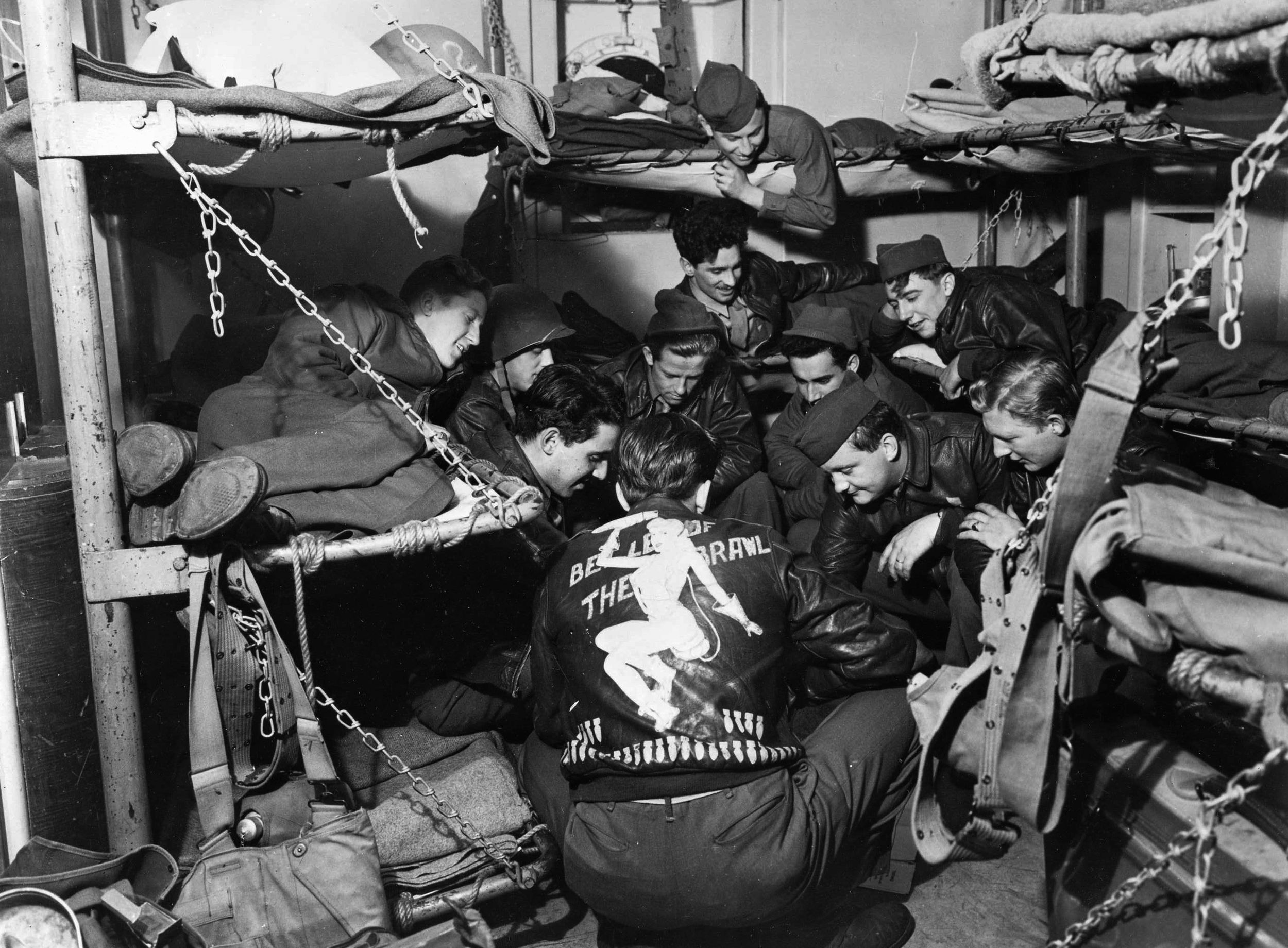

Rules and Regulations
Feeding such a multitude was no easy task. There were two main meals a day in six staggered sittings. Breakfast was available from 6:30 am to 11:00 am, and dinner from 3:00 pm to 7:30 pm. Soldiers could take as much as they wanted but were allotted only 45 minutes to complete their meals. As one group was exiting, another group would be queueing up to be served. Sandwiches were available for the men to take with them as they exited, to snack on between meals.
The former first-class dining saloon was the main enlisted men’s mess hall. It had been stripped of its prewar finery, but the great world map of earlier days was still in place, a reminder of happier times. Officers ate in the former tourist class lounge. Rank did have some privileges. Officers dined on regular tables and had food served by stewards. However, there was literally no “free lunch.” At the end of the crossing, it was expected that an officer would give the stewards a generous tip.
On such a crowded ship, rules and regulations assumed even greater importance. The Queen Mary officially was declared a “dry” ship—no alcoholic beverages allowed. Some rules were almost impossible to enforce. There was to be no swearing, no obscene or profane language, and above all no gambling of any kind. The GIs ignored the gambling ban, and probably drove the MP’s to distraction. Poker, blackjack, and crap games were a major form of amusement during the long six-day passage.
Some rules were rigidly enforced. There was a standing order that all personnel had to wear their life jackets and helmets when topside. Any person caught without these items had to forfeit his shoes. The story is told of an American admiral who must have thought his exalted rank put him above these things. He was caught without a life jacket and forced to surrender his shoes. He padded off in his stocking feet, thoroughly chastened.
Clandestine gambling apart, there was little to do on these long, cramped voyages. There was an occasional work detail, and some officers arranged exercise workouts. Movies were shown, but the Queen Mary ’s film library was limited. At least the GIs were aboard for only six days. Cunard crew members had even less choice. It was said that one crewmember saw the Laurence Olivier film, Pride and Prejudice , 120 times!
Other soldiers passed the time by reading, writing letters, or simply talking to buddies. Those seeking religious solace could attend services in the Catholic, Protestant, or Jewish chapels. Mandatory lifeboat drills, ironic in that there were not enough lifeboats to accommodate all, also provided some breaks in the monotony.
The Stench of Seasickness
Life may have been tolerable, but it was anything but a pleasure cruise. The RMS Queen Mary was a legendary ship in any guise, even a troopship, but even before the war it had a tendency to roll in heavy seas. This was an unfortunate trait in the North Atlantic, well known for centuries as one of the most treacherous, even capricious, oceans in the world.
Seasickness was common, and the men rarely washed. There was always a lurking fear that one would be caught in the shower when the ship was torpedoed. Rather be dirty and safe than be clean and sorry. The net result was an atmosphere of cigarette smoke, sweat, vomit, and diesel oil that cannot be imagined by merely looking at period photographs.
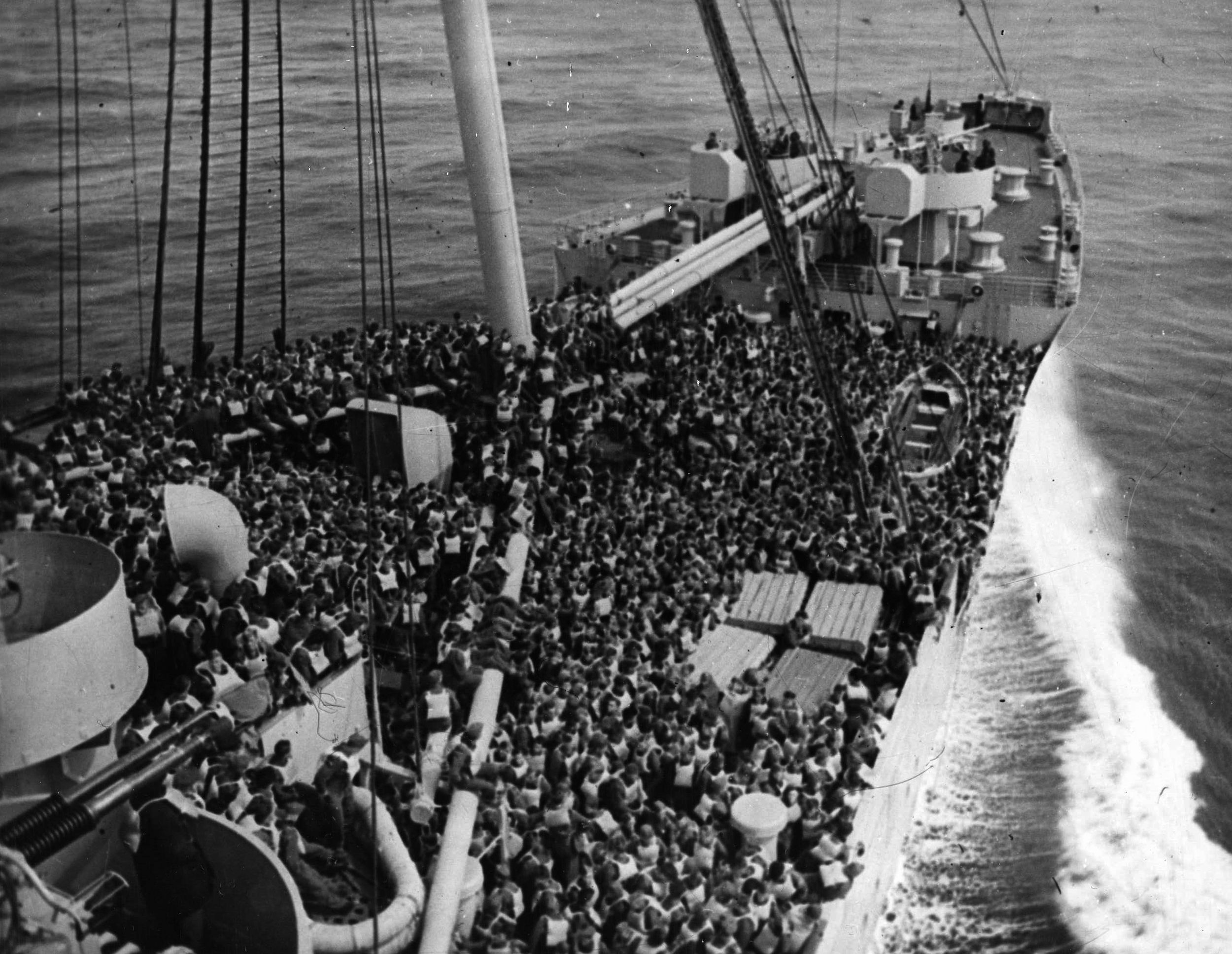
The Queen Mary ‘s Wartime Successes
In spite of the problems and discomforts, the Queen Mary was succeeding in its mission. During August 2 through 7, 1942, the ship carried a complete division, the First Armored, across the Atlantic. On that voyage, 15,125 troops and 863 crewmen were aboard. The ship reached a milestone on the July 25-30, 1943, passage. On that voyage she transported 15,740 troops and 943 crewmen, for a grand total of 16,683. It was the largest number of people ever carried by a steamship.
The Queen Mary also transported Axis POWs during her years of active service. Early in the war, the ship transported Italian prisoners to Australia. After the tide turned in North Africa, thousands of Germans also found themselves involuntary passengers aboard the great liner. Winston Churchill was aboard the Queen Mary for three trips, and during one of these voyages the liner also carried 5,000 German POWS.
On the whole, the Axis prisoners caused little trouble, but occasionally there were some minor flareups. In June 1942, some German prisoners scrawled anti-British slogans on a bulkhead. They were confined to the brig for a few days on bread and water. When some British personnel tried to counter with “Rule Britannia” graffiti, they too were thrown in the brig to cool off for a few days. One did not mark the Queen Mary ’s walls, and the captain was determined not to play favorites!
The Germans would claim to have sunk the Queen Mary from time to time, partly in an effort to locate it. The Germans hoped that the false reports would prompt the Queen Mary or the Admiralty to break radio silence. If they did so, then the Germans could get a fix on the vessel. The British never fell for such a transparent ruse, and throughout the war the Queen Mary led a charmed life.
The HMS Curacao Tragedy
One tragedy did mar the Queen’s otherwise sterling wartime career. It occurred off the coast of Ireland on October 2, 1942, at about 2 pm. Captain Cyril Illingsworth was the ship’s master on this voyage, and at the time he was in the chartroom in the back of the bridge. Navigating officer Stanley Wright remarked to the captain that he felt unhappy that the escorting vessel, HMS Curacao , was getting too close. Illingsworth dismissed Wright’s worries, saying the light cruiser was used to escort duties and she “will keep out of your way.”
At the moment, the Queen Mary was executing a zigzag pattern, standard procedure for protection against submarines. The HMS Curacao was a light cruiser of World War I vintage, 450 feet long and 4,200 tons, commanded by Captain John Boutwood, a regular Royal Navy officer.
Suddenly, the Curacao moved close to the Queen Mary —too close. Recognizing the danger, the Queen Mary ’s senior first officer, Noel Robinson, ordered, “Hard a port!” The horrified officer knew they had only two minutes to rectify the course and heading and to ward off disaster.
It was not enough. The Queen Mary struck the Curacao a glancing blow at an acute angle about 11 feet from her stern, which spun the smaller vessel around 90 degrees and left her vulnerable for a second, more devastating collision. The Queen Mary sliced through the Curacao ’s hull like a knife though butter, cutting the unfortunate cruiser in two amid the sounds of escaping steam and tearing metal. The Curacao ’s stern momentarily half capsized, its propellers spinning in the empty air, before finally disappearing beneath the waves. The front half, consumed in flames, floated a moment or two longer before going under.
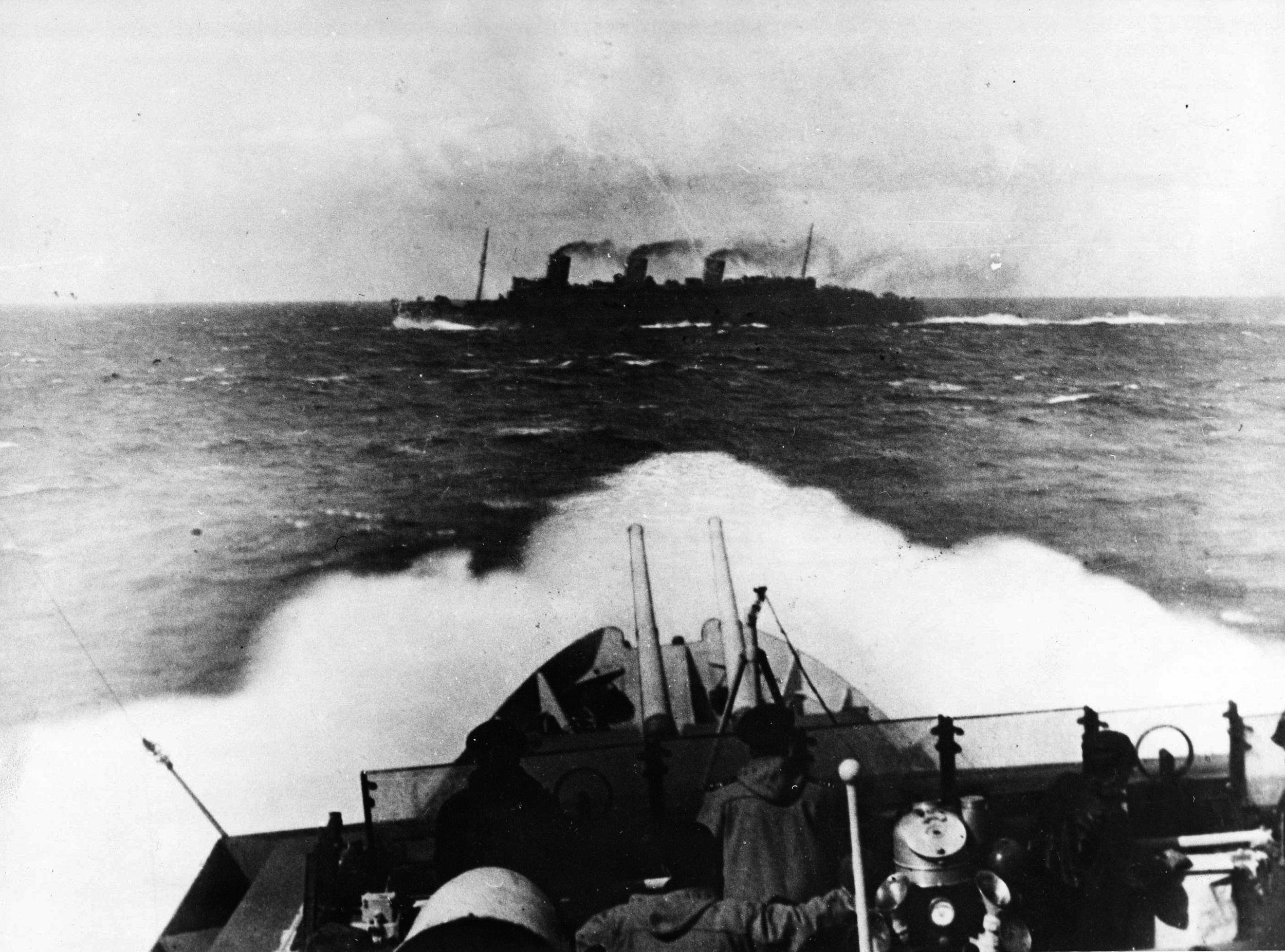
Within seconds, the sea was a thick, viscous mass of oil slicks and screaming, half-dazed survivors. The Queen Mary sailed on without stopping—those were the standing orders—leaving smaller ships to pick up survivors. Only 101 sailors out of a complement of 429 officers and men lived to tell the tale.
Damage control parties quickly examined the Queen Mary ’s bow and found an 11-foot hole at the point of impact. There was serious flooding to the forepeak, but as long as the watertight bulkhead held, there would be no serious danger. Speed was reduced to less than half, about 13 knots. The ship was inspected and deemed seaworthy. There was no need to replace the damaged bow, at least at the time.
The tragedy had been caused by a series of wrong assumptions, small miscalculations, and bad timing thoroughly based on human error. Both captains were men of ability and sound judgment. Though he was not entirely responsible for the disaster, Captain Illingsworth automatically thought that the Queen Mary would have the right of way. It was a fatal assumption.
The RMS Queen Mary ‘s Long Voyages of World War II
The RMS Queen Mary then embarked on one of the greatest troop delivery shuttles in her career. Dubbed the “long voyage,” the vessel went from Scotland, to Suez, and to Sydney, Australia, and then returned to Gourock. Total round trip mileage was 37,943 miles.
The Queen Mary and her sister ship, Queen Elizabeth , were a vital part of the war effort. Indeed, many claim they helped shorten the war by about a year. Without the massive buildup provided by the Queens , D-Day might have been postponed until 1945. Between June 1943 and April 1945, the Queen Mary carried nearly 340,000 American and Canadian troops on journeys that covered 180,000 miles. The political consequences were immense. If the Western allies had been delayed, Stalin’s Red Army might have spread Communism beyond the reaches of Eastern Europe.
It was Winston Churchill who summed up the matter best. “Built for the arts of peace and to link the Old World with the New,” he later wrote, “the Queens challenged the fury of Hitlerism in the Battle of the Atlantic. Without their aid, the day of final victory must unquestionably have been postponed.”
Eric Niderost is a college professor in Hayward, California.
Back to the issue this appears in
Join The Conversation
7 thoughts on “ rms queen mary’s war service: voyages to victory ”.
Hi Eric… Thank you so much for your well researched information on the Queen Mary.
I have a shoe box of memorabilia and souvenirs collected by my uncle, Leslie Jack Connolly, throughout his life. I came across a postcard of the H.T Queen Mary and two menus from the officer mess, dated January 1941, and just had to find out why he had collected these items. I knew he had been in the Australian Army and I also knew he had served in the Middle East and now I know how he got there. He left Sydney, Australian on the Queen Mary at the end of December 1940, or the beginning of January 1941 and arrived in Trincomalee, Sri Lanka on the 31 January, 1941. His brother Eric Sydney Connelly was also with him. So thank you again for your information on the Queen Mary. Regards Vicki
I just came across a letter from my father, John Oliver Fletcher, to a family friend, detailing his war time experiences as a pilot in the RAF. As a side note at the end of the letter, he left this comment: “The stamp on your envelope is interesting. It shows the very first building that I ever saw in Canada after leaving the Queen Mary with a hole in it at Boston before heading for New Brunswick.” I have vague memories of my father describing the tragedy and the result… but did not have any real idea what a big deal it was, as he tended to brush things off, I think, as a way to make them easier for us to understand. Much of the emotional toll of war was not communicated, but he did refuse to ever go on any type of vacation cruise, saying that they were a waste of money. I now understand that there was much more behind that stance than he was able to communicate. Thank you for your detailed article enabling me to better understand who my father was long before I arrived.
Hi Vicki – We would love to hear more about your uncle’s connection with the RMS Queen Mary and maybe able to help provide more detail of his time onboard the ship. Please reach out if interested. [email protected] – Foundation for the RMS Queen Mary ( http://www.Qmi.care ) Thank you
My dad was a sailor on the Queen Mary I around 1944-1945. He remembers ferrying American troops across the Atlantic. Interesting to hear about the history of the ship.
Hi Pauline – We would love to hear more about your Dads’s connection with the RMS Queen Mary and maybe able to help provide more detail of his time onboard the ship. Please reach out if interested. [email protected] – Foundation for the RMS Queen Mary ( http://www.Qmi.care ) Thank you
1944, I was 4 on holiday at the Isle of White. I grew up with the memory that a man on horseback rode along the beach telling everyone to get out of the water as the Queen Mary was either coming or going out of Southampton. Could this be a true memory.
My dad, Joseph Kohout, was with the Battery B, 743rd Battalion, Coastal Artillery (AA), when his unit was one of several on the QM during its ’40 Days & 40 Nights’ voyage, 2/18/42-3/28-42. He ended up in New Guinea with Aussie units as an AA gunner. Said he remembered the Rio de Janeiro port call. Said the troops on the QM were issued surplus WWI kapok life jackets which were mostly no good when they had a pool filled with water to test them. Kapok tree floss inside had deteriorated! Lost its ‘buoyancy’; didn’t help morale much! Also said he was trained to shoot down German/Italian planes and thought he was being sent to Britain, not the South Pacific, and had to learn Japanese plane silhouettes and markings once he got there.
Leave a Reply Cancel reply
You must be logged in to post a comment.
Share This Article
- via= " class="share-btn twitter">
Related Articles
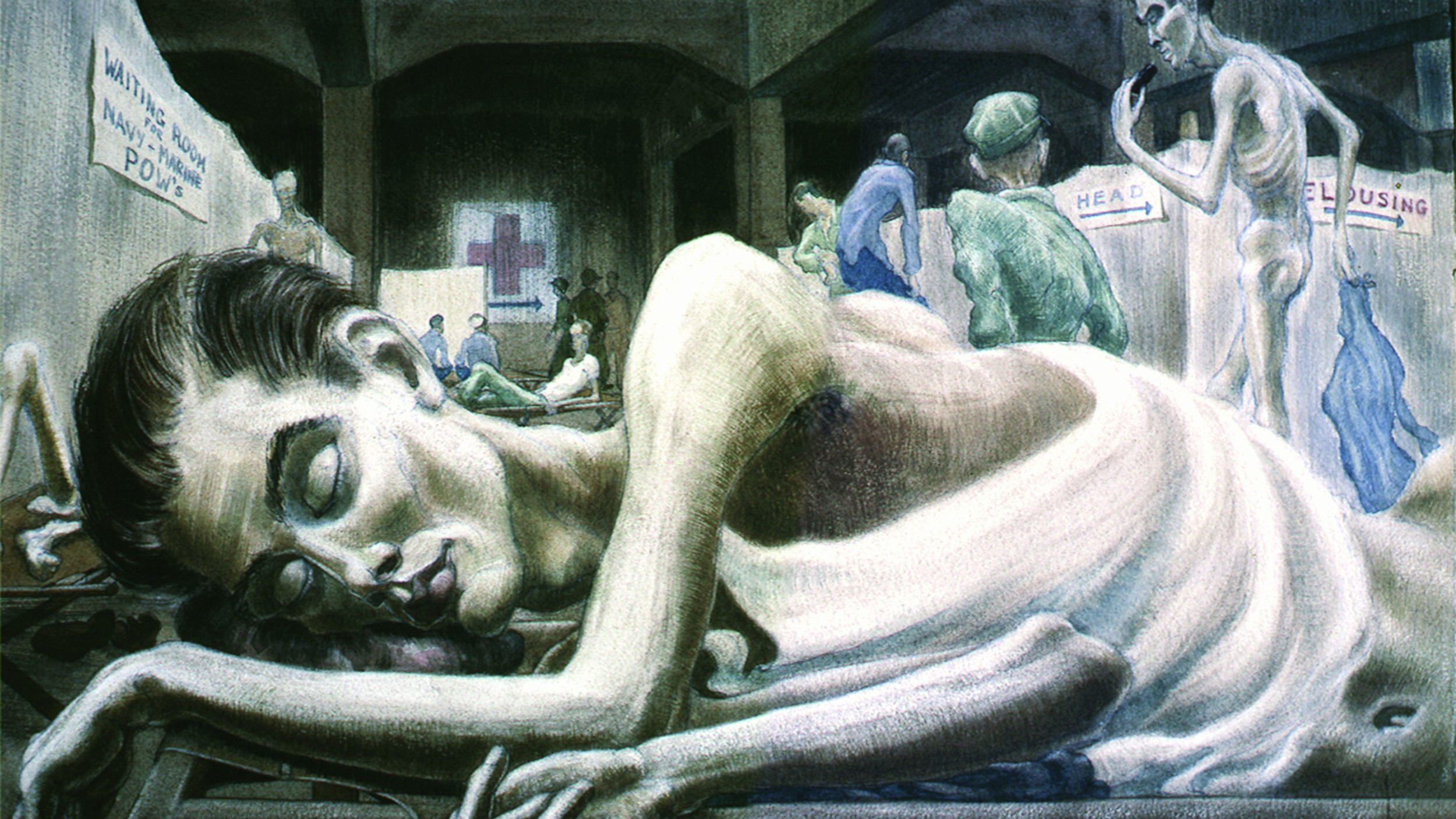
Hell on New Britain
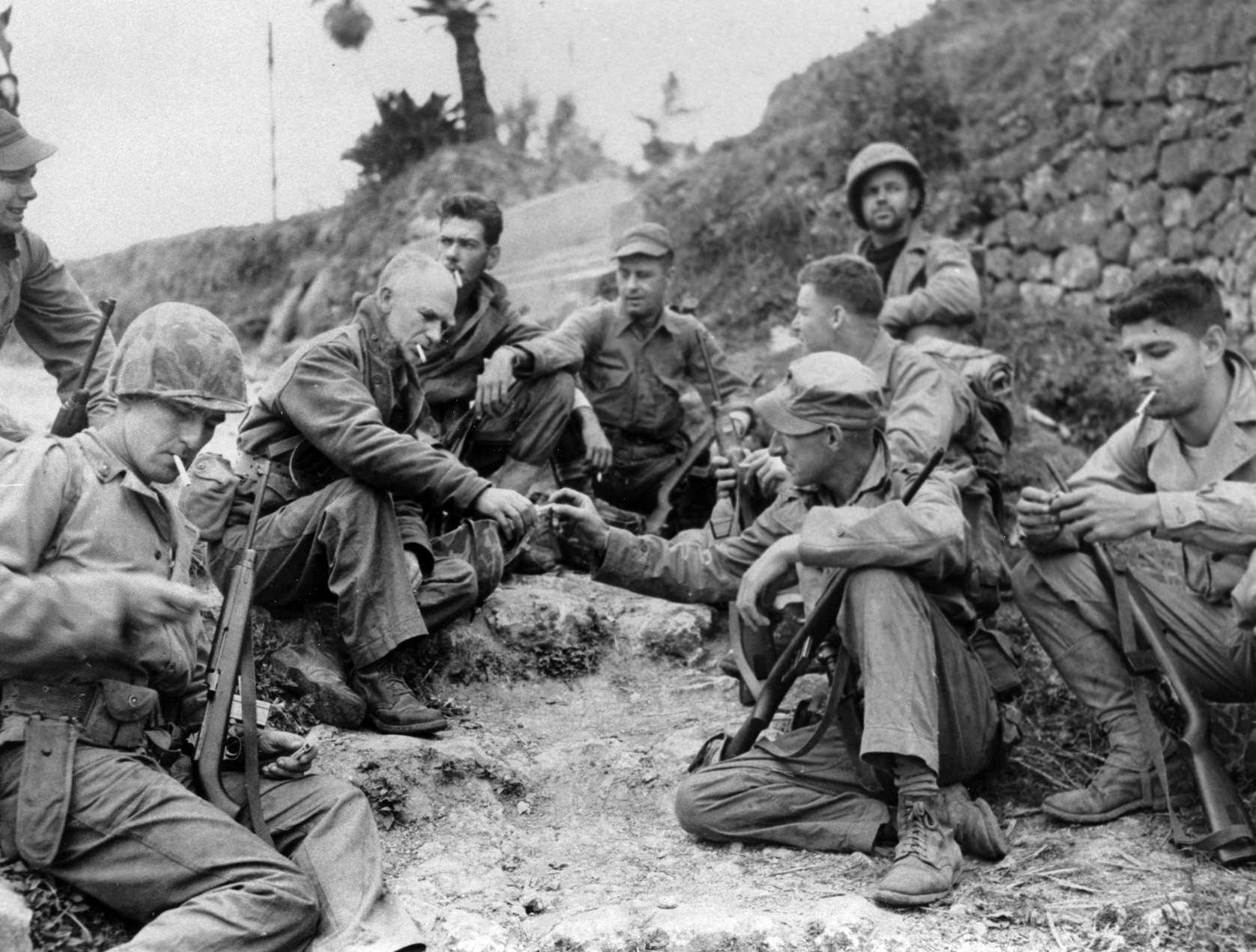
Ernie Pyle: Foxhole Dateline
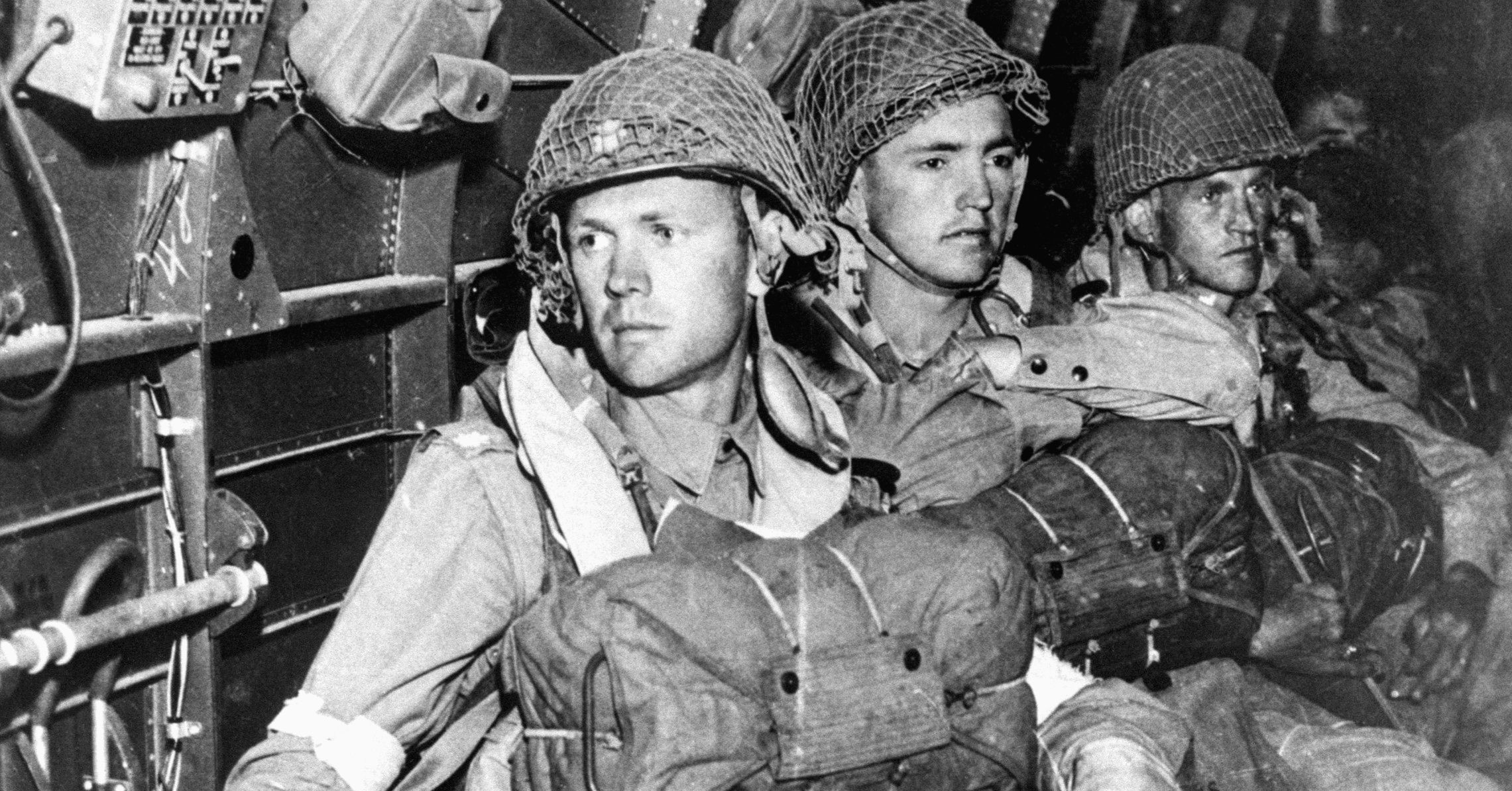
WWII Letters: Corporal James. G. Delaney
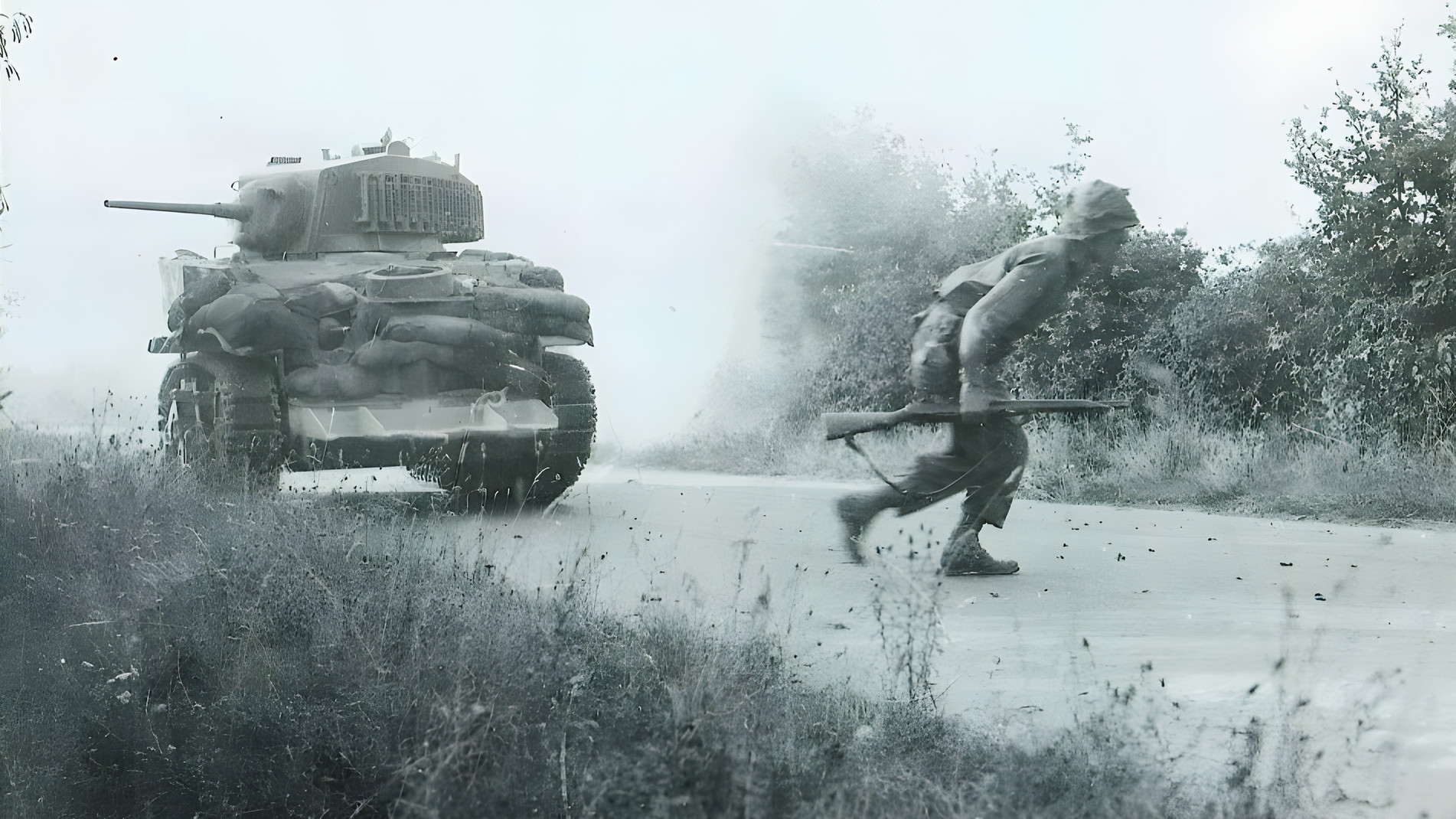
Battle of Mortain: The Big Red One’s Square-Off with German Panzers
From around the network.
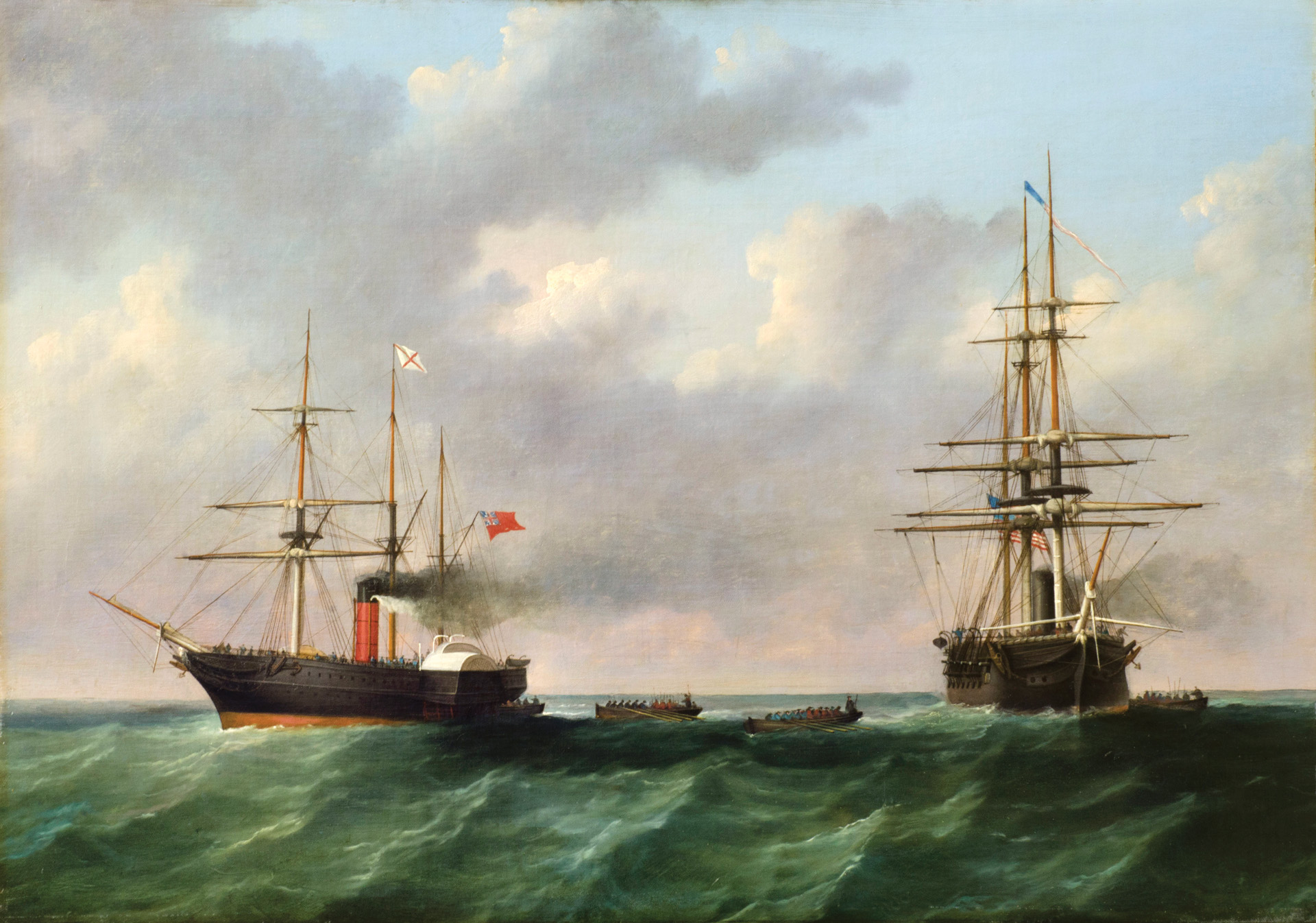
The Trent Affair: When the Union and Great Britain Nearly Went to War
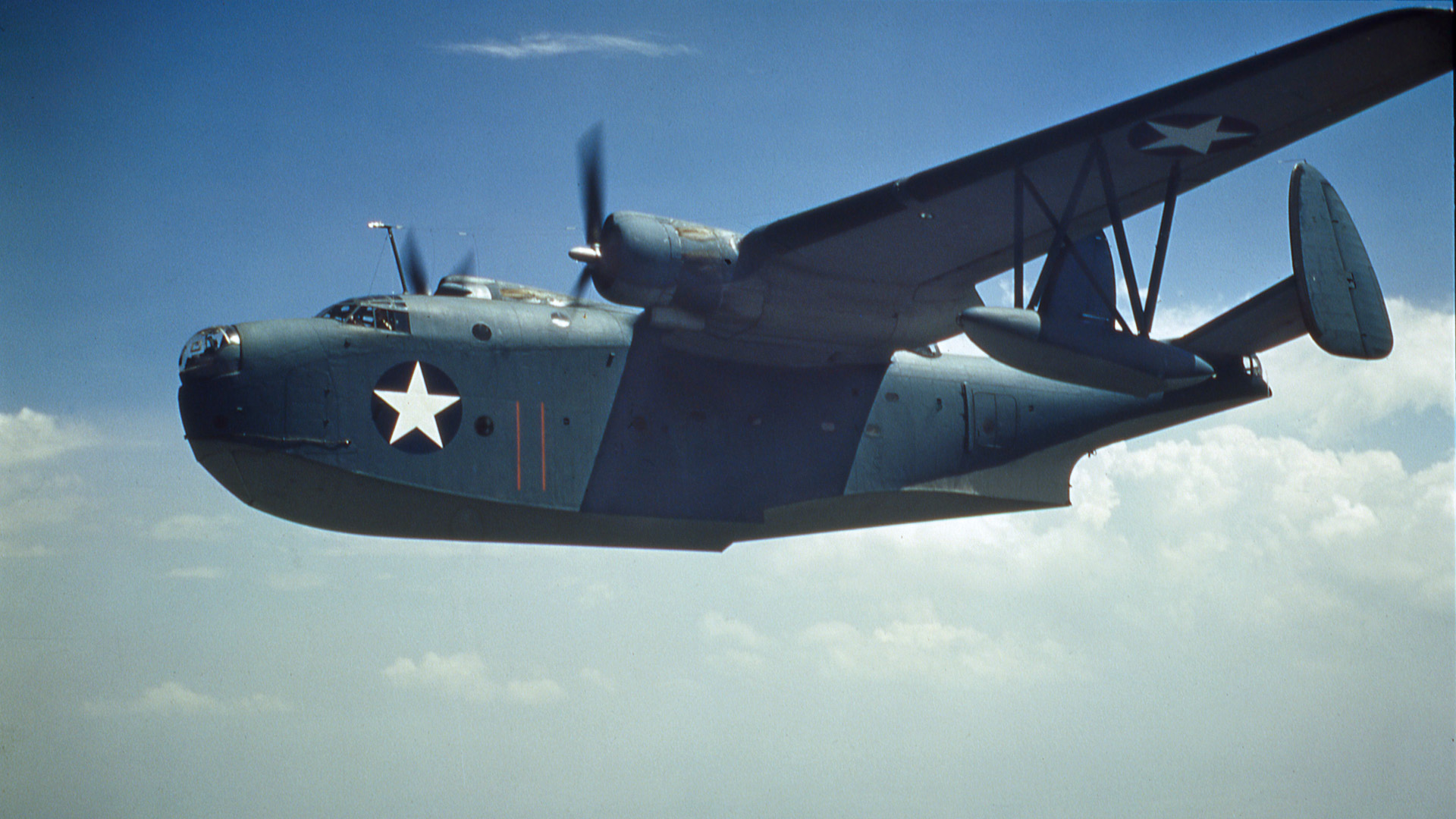
VP-16 and Operation Forager
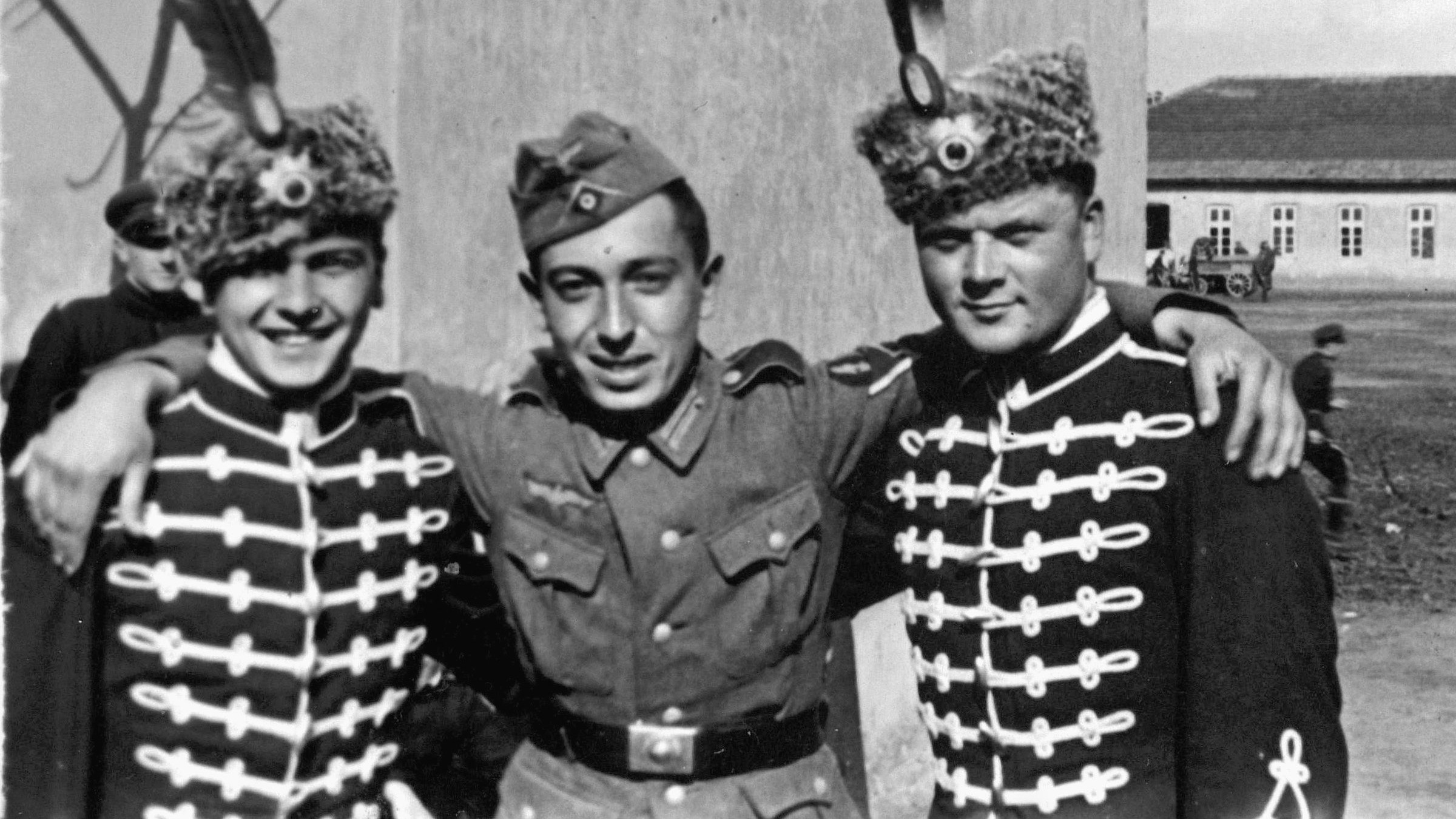
European Theater
The Power of Cloth
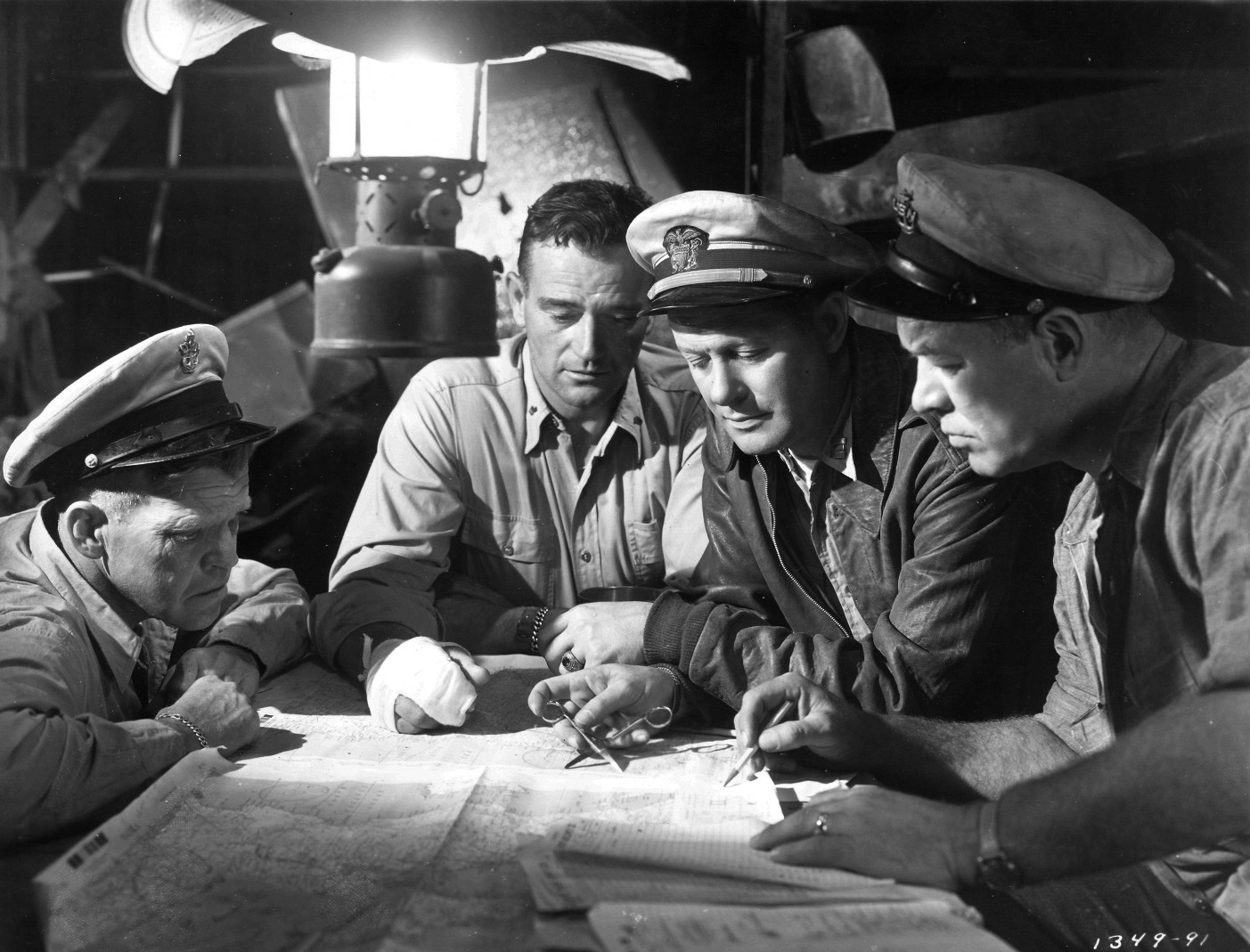
“John Ford’s Navy”: A Filmmaker in the OSS
A 99-Year-Old Veteran Traveler Recalls the Maiden Voyage of the Queen Mary

Topical Press Agency/Hulton Archive/Getty
“It was rather like going to the moon today.”
H eather Beagley was an impressionable 14-year old English schoolgirl when her family embarked on the maiden voyage of the Queen Mary. On May 27, 1936, the magnificent Cunard flagship set out for the first time from Southampton, via Cherbourg in France, to New York. Heather is now 99 years old, but her vivid memories of that unique journey are fresh and vital. She recently gave a talk to the fellow residents of her seniors’ care home in Hertfordshire, England.
“It was rather like going to the moon today,” Heather recalled. “The excitement, of course, was tremendous.” The Queen Mary’s completion had been delayed by the Great Depression of the early 1930s, but by 1936 she was finally ready for her inaugural voyage. Tickets were almost impossible to obtain—Heather’s father had applied many months in advance to obtain reservations. Her headmistress gave her permission to skip school for two weeks on the grounds that the voyage would be an education, to the envy of her fellow pupils. The Beagley family’s many neighbors and well-wishers from their home town of Bristol motored to Southampton to wish them “Bon Voyage.” They were not alone—nearly 1 million observers flocked to cheer the enormous ship. Vast crowds lined the quayside, the docks and surrounding coastline, or packed onto a flotilla of small craft, paddle-steamers, fishing boats and dinghies, to cheer the great ship as she inched down the Solent and out into the English Channel. Overhead, planes buzzed the ship, with news cameramen recording the departure for patriotic newsreels to be shown the following days in cinemas, where it would be watched avidly and triumphantly by millions more. “With her goes the hope and pride of a nation,” boomed the commentator, above the swelling chords of Rule Britannia .
Heather was amazed at the sheer scale of the Queen Mary ; first seen looming mightily over the Southampton quayside when the family embarked. The ship weighed 81,000 tons, and was longer in length than the height of the Eiffel Tower. Each propeller was 20 feet high, and powered by 200,000 horsepower main engines. The forward funnel was 70 feet high. There were 30,000 lamps and 21 lifts on board, and the ballroom was the largest ever constructed inside a ship. Just as later generations were enthralled by spacecraft, in the 1930s ocean liners totally captured the public imagination.
There were 2,079 passengers on board the Queen Mary, and 1,100 crew. First class passengers paid £100 a head for return tickets (approx £5000 today) while Third class paid £33 return per person (about £1890). Mr and Mrs Beagley had a first-class cabin, while their daughter shared a four-berth cabin with three other young women in second class. Heather joined her parents for spectacular and delicious meals in the magnificent dining room. She remembered that the Art Deco style interiors of the ship were like those of a fantasy world, with subtle wood paneling, superb lighting, and red roses at every table. The public spaces came alive especially in the evenings—glamorous galas peopled by men and women in evening dress or beautiful ball gowns, fueled by ample champagne—and a spirit of celebration marked the whole voyage.
For passengers, the emphasis in daytime was on leisure and pleasure. All classes were free to mingle on deck on this first voyage, and for sociable adults, convivial afternoons afloat were often spent in reclining chairs on the upper decks, with a rug over one’s knees, gossiping and chatting while attentive stewards hovered with a trayful of tea and cakes, or cocktails. Heather enjoyed playing deck games with fellow travelers, reading in the well-equipped library, or watching movies in the cinema. The 1930s was the Golden Age of film, and a number of glamorous celebrities were making the journey, including actress Olivia de Havilland and Scottish-born actor / manager Jack Buchanan. He was tall, handsome and distinguished, and he partnered Heather every evening as, after dinner, they danced to Henry Hall’s Dance Band in the gigantic ballroom.
The Queen Mary’s inaugural crossing took 4 days, 5 hours and 20 minutes, just 40 minutes slower than her great rival, the Normandie . All the great liners, whether American, British, French, or German, competed for “The Blue Riband,” an informal prize for the swiftest crossing of the Atlantic. Heather recalled that there had been an iceberg scare during her voyage, after the ship encountered fog. The awful fate of the Titanic which struck an iceberg on her own maiden voyage only 24 years earlier was still fresh in the minds of transatlantic travellers, so Cunard were disinclined to challenge the speed record on this first outing. However, on a later trip the Queen Mary managed to cross in less than four days, and she subsequently held the Blue Riband for 14 years.
On 1 June 1936, the Queen Mary reached the end of her first voyage and sailed into a rapturous reception. “The welcome in New York was astounding!” Heather recounted. She watched in wonder as airplanes flew overhead in salute, ships of all shapes and sizes hooted, and fire hoses sprayed giant jets of water, creating rainbows over the Hudson River. VIPs came out in little boats to greet the new “Ocean Greyhound,” and crowds of cheering sightseers lined the quays to welcome the ship. The general pandemonium raised by the competing sirens, plane engines, brass bands, whistles, and whoops, was drowned out by an answering blast from the ship’s sonorous horn, a resonant vibrato, likened by some to hearing Dame Clara Butt singing There’ll Always Be An England.
Heather’s delightful personal memories add a great deal to what we know today of that prestigious and momentous journey, 85 years ago. The Queen Mary is now moored permanently at Long Beach in California, where she is a popular visitor attraction and hotel. This venerable, elegant ship is the last of the great ocean liners of the interwar era, the magnificent vessels that linked the peoples of Europe and North America, before the advent of commercial flight in the 1950s. “The Mary” as she was known to her crew, is still regarded with great affection by the thousands of people who sailed in her during her four decades in active service. But perhaps the most pertinent tribute comes from the lady who sailed on her inaugural visit as a teenager. More than eight decades after that voyage, Heather Beagley simply says “It was the most inspiring trip of my life.”
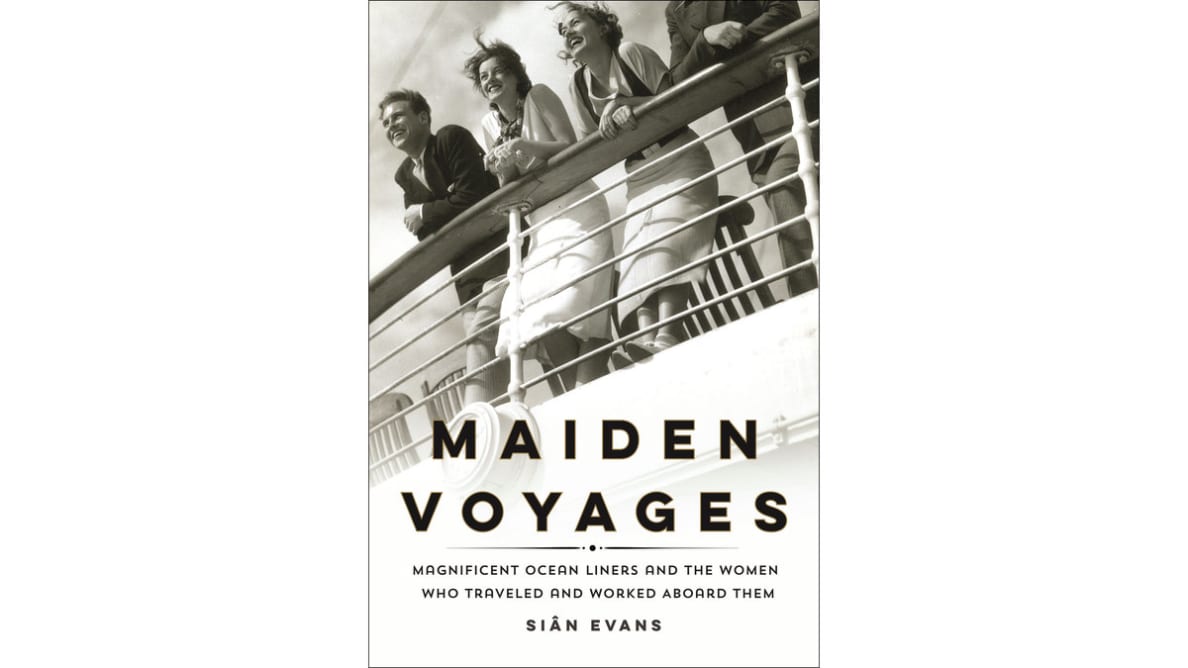
Siân Evans is the author of ‘ Maiden Voyages: Magnificent Ocean liners and the Women who Traveled and Worked Aboard Them ’. Published by St Martin’s Press, 10 August 2021, US $28.99

Got a tip? Send it to The Daily Beast here .
- About company
- GENERAL CONTRACTOR

+7 (495) 526-30-40 +7 (49657) 0-30-99
THE HISTORY OF THE COMPANY CREATION
1993 how the construction company remstroy was created the year 1993 was a period when a lot of construction companies, which had been working successfully during the soviet times and had rich staff capacity, were forced to cease their activity for various reasons. a lot of capable specialists either had to look for another job or change their field. but there were also those who were willing to realise their potential in the field of construction in accordance with the received degree and the experience they had accumulated. thus, in 1993 in elektrostal (moscow oblast) a group of specialists and people sharing each other’s ideas, who had enormous educational background and the highest degree in architecture, organized and registered ooo firm erg which began its rapid development and successful work, offering its service both on the construction market and other areas. 2000 industrial construction is the main area seven years of successful work have shown that combining different types of activities in the same company is not always convenient. and in the year 2000 the founders of ooo firm erg decided to create and register a monoprofile construction company ooo remstroy construction company. industrial construction was chosen as the priority area. it was in this area that the directors of ooo sk remstroy began their working life and grew as specialists. in order to achieve the set goal, they selected a mobile team of professionals in the field of industrial construction, which allows us to cope with the tasks assigned to ooo sk remstroy throughout russia and the near abroad. 2010 manufacturing of metal structures we possess modern equipment that allows us to carry out the entire cycle of works on the manufacture of metal structures of any complexity without assistance. designing – production – installation of metal structures. a staff of professionals and well-coordinated interaction of the departments let us carry out the work as soon as possible and in accordance with all customer’s requirements.” extract from the list of members of self-regulatory organizations, construction.
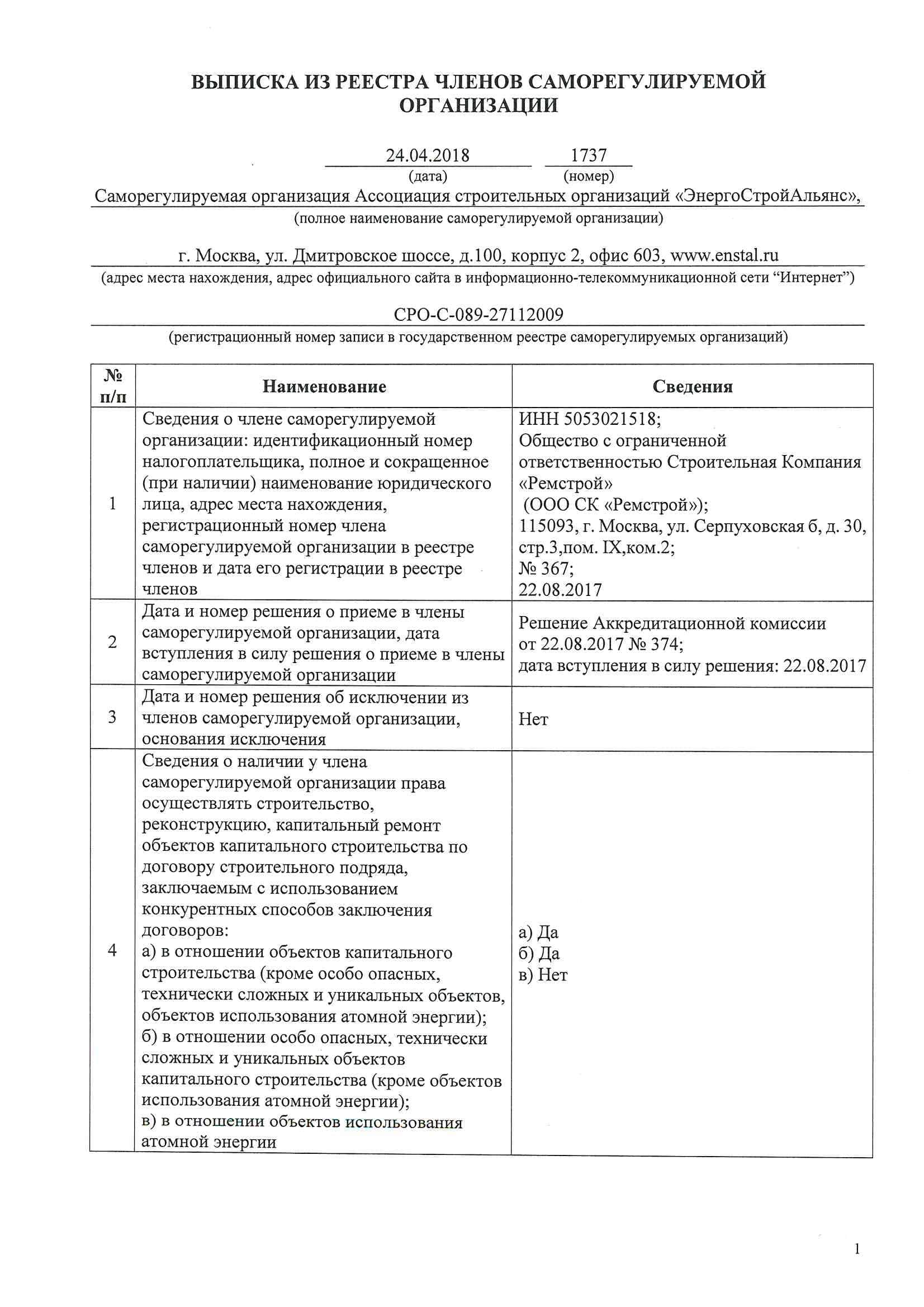
LICENSE OF MINISTRY OF EMERGENCY SITUATIONS
Certificates, system of managing quality.
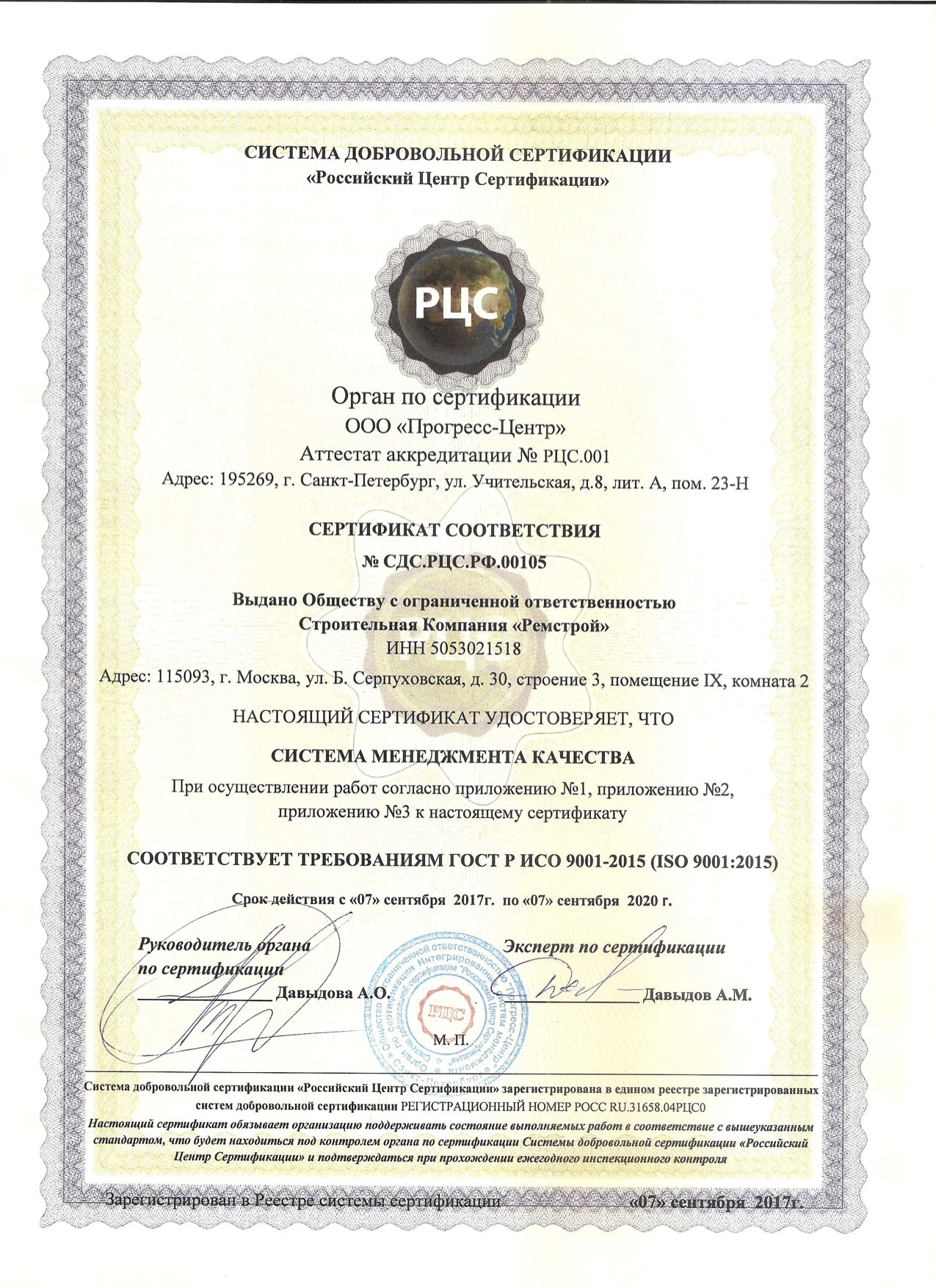
SYSTEM OF ECOLOGIAL MANAGEMENT
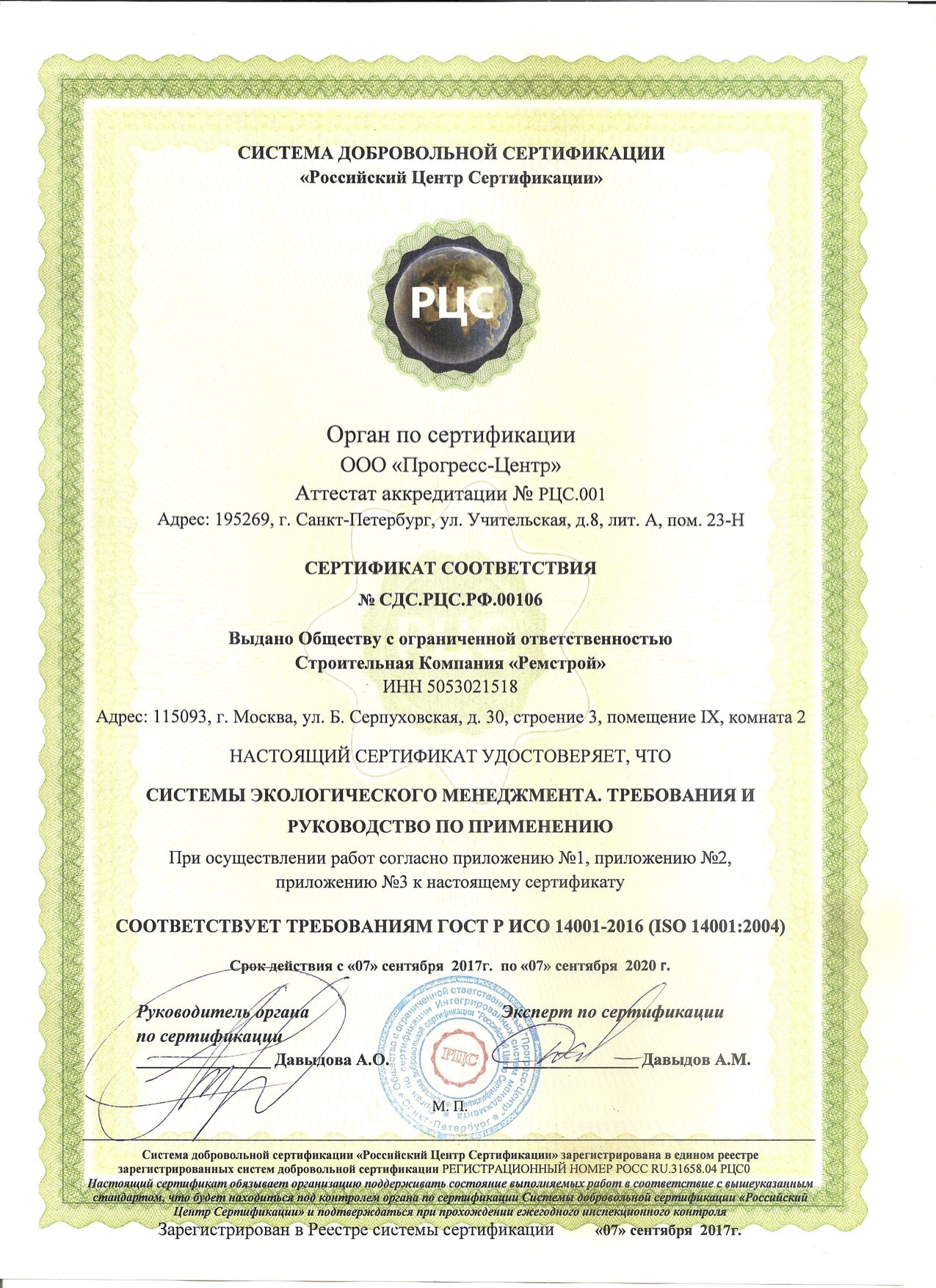
SYSTEM OF OCCUPATIONAL SAFETY AND HEALTH MANAGEMENT
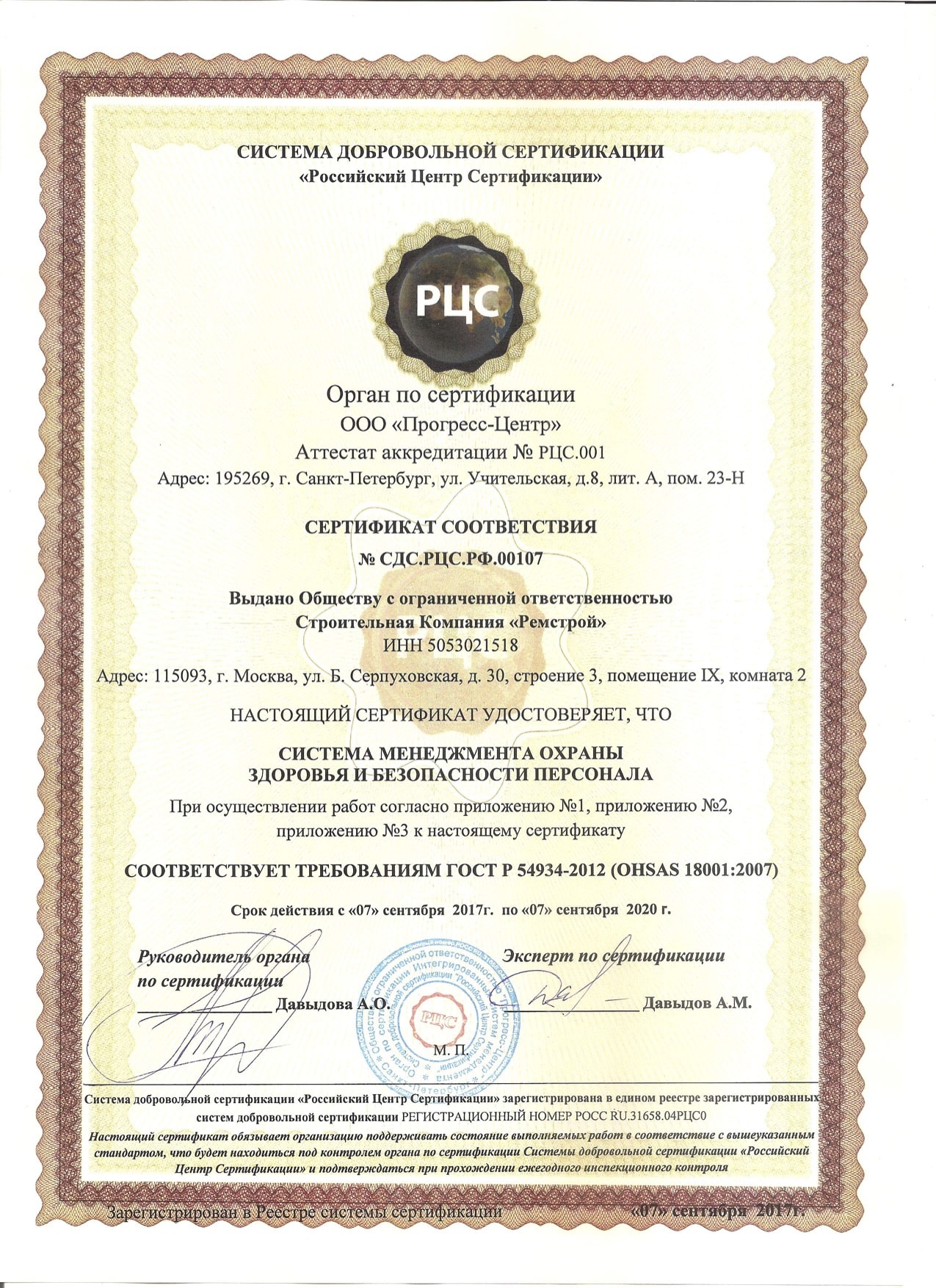
LETTERS OF RECOMMENDATION
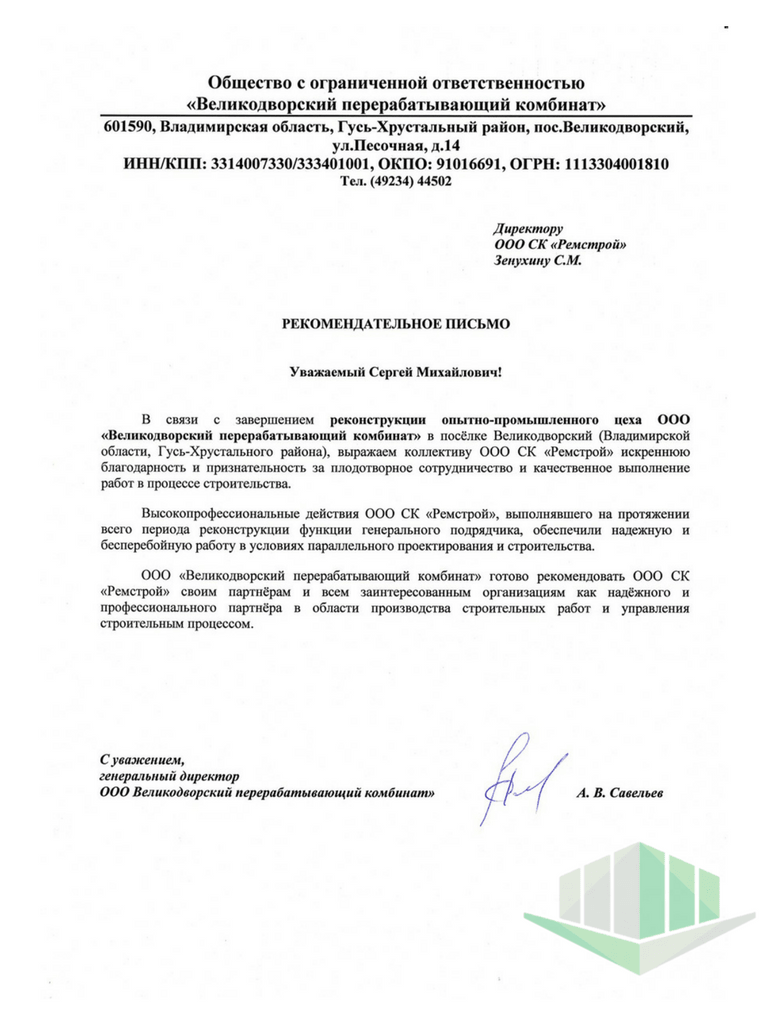
THE GEOGRAPHY OF CONSTRUCTION SITES
YOU CAN FIND MORE INFORMATION ON THE CONSTRUCTION SITES OF OOO REMSTROY ON THE PAGE OF THE SITE
OUR CLIENTS

http://remstroi.pro/yandex-promyshlennoe-stroitelstvo


COMMENTS
Richard Cavendish describes the maiden voyage of the Queen Mary on May 27th, 1936. Richard Cavendish | Published in History Today Volume 61 Issue 5 May 2011. The Queen Mary arrives in New York Harbor, June 20, 1945. US National Archives. According to legend while the Cunard-White Star Line's new Hull Number 534 was under construction at the ...
Queen Mary sailed on her maiden voyage on 27 May 1936 and won the Blue Riband that August; she lost the title to SS Normandie in 1937 and recaptured it in 1938, holding it until 1952, when it was taken by the new SS United States. With the outbreak of World War II, she was converted into a troopship and ferried Allied soldiers during the ...
The Queen Mary was in service from 1936 to 1967, and it later became a hotel and tourist attraction, docked at Long Beach, California. In the late 1920s the Cunard Line faced an aging fleet ... On May 27, 1936, the Queen Mary embarked on its maiden voyage, traveling from Southampton, England, to New York City, with a stop in Cherbourg, France ...
The Maiden Voyage Of The Queen Mary. On May 27, 1936, the Queen Mary departed from Southampton, England embarking on her maiden voyage. She boasted five dining areas and lounges, two cocktail bars and swimming pools, a grand ballroom, a squash court and even a small hospital. The Queen Mary had set a new benchmark in transatlantic travel, which ...
Thus repeating what veteran pilot Captain Eddie Rickenbacker had done in a DC-2 in 1936 as the ship approached New York on her maiden voyage. In the cool of the morning of December 9, 1967 the Queen Mary was steaming serenely past San Diego. Most of her passengers were up and about in spite of the late night before.
The Maiden Voyage - 27 May, 1936. After completion, and brief trials to establish that her engines and other systems were functioning correctly, the Queen Mary arrived in Southampton for the start of her maiden voyage to New York. Between May 21 and May 23, 15,000 people paid five shillings each to be shown around the new ship.
Joseph Kennedy and his son (future President) John F. Kennedy on board RMS Queen Mary. The RMS Queen Mary, a luxurious ocean liner that carried the world's rich and famous before the dawn of the jet age, is celebrating the 80th anniversary of its maiden voyage. English actress and singer Gertrude Lawrence (nearest to camera) and her dining ...
The ship went into service in 1936, and in August of that year it captured the fabled "Blue Ribband" prize for the fastest transatlantic passage. ... The RMS Queen Mary's Maiden Voyage as a Troopship. On May 4, 1940, Queen Mary left Sydney with 5,000 Aussie troops aboard. The great liner joined other "drafted" passenger ships ...
Regal and Retired: The Story of RMS Queen Mary. The story of Britain's favourite ocean liner, from its maiden voyage from Southampton in May 1936 to the present day. 30 minutes Last on. Sun 2 Jul ...
Leaving Southampton on 27 May 1936, her maiden voyage to New York set a new benchmark in transatlantic travel. ... The Queen Mary was a great attraction to the rich and famous celebrities of the ...
May 27 began the start of the maiden voyage, with arrival at New York on June 1, 1936. While she did not take the revered Blue Riband speed record from NORMANDIE, she was poised to do so in her debut year. The two rivals battled out the record until August 1938, when QUEEN MARY proved the fastest with a speed of 30.99 knots (Westbound).
The Queen Mary sailed on her Maiden Voyage in 1936 from Southampton, England to New York City. In 31 years of plying the North Atlantic Ocean in war and peace, in fair weather and foul, the Queen Mary would become the most legendary ocean liner the world has ever known. Winston Churchill enjoyed travelling in grand style by sea and crossed the ...
On May 27, 1936, the Cunard liner RMS Queen Mary left England on its maiden voyage to New York. Greatest Liner has auspicious start on her career.You can lic...
All Passenger Lists for the RMS Queen Mary Available at the GG Archives. Listing Includes Date Voyage Began, Steamship Line, Vessel, Passenger Class and Route. ... Listing Includes Date Voyage Began, Steamship Line, Vessel, Passenger Class and Route. ... , and more. Browse Queen Mary Passenger Lists by Decade. 1930s | 1940s | 1950s | 1960s ...
GAUMONT BRITISH NEWSREEL (REUTERS)To license this film, visit https://www.britishpathe.com/video/VLVA195FBBLPAR93FO6C1C0FV1YLJ-THE-QUEEN-MARY-ARRIVES-IN-NEW-...
Built in the final era before passenger airlines became popular and when ships still dominated trans-Atlantic travel, RMS Queen Mary was designed with all the best features of the ocean liners that had come before it. When it departed from England on May 27, 1936, on its maiden voyage across the Atlantic Ocean, the ship had a ballroom, two swimming pools, a library, a musical stage, and a ...
1936 - 1939. 1929. April 3 ... RMS Foundation, Inc., schedules Diamond Jubilee Celebration for the 60th Anniversary of the Queen Mary's Maiden Voyage from Southampton to New York. 1997. May 31 "Titanic: The Expedition" exhibit makes its West Coast debut aboard the Queen Mary. December 9.
Published Sep. 19, 2021 7:29AM EDT. H eather Beagley was an impressionable 14-year old English schoolgirl when her family embarked on the maiden voyage of the Queen Mary. On May 27, 1936, the ...
Elektrostal , lit: Electric and Сталь , lit: Steel) is a city in Moscow Oblast, Russia, located 58 kilometers east of Moscow. Population: 155,196 ; 146,294 ...
In 1954, Elemash began to produce fuel assemblies, including for the first nuclear power plant in the world, located in Obninsk. In 1959, the facility produced the fuel for the Soviet Union's first icebreaker. Its fuel assembly production became serial in 1965 and automated in 1982. 1. Today, Elemash is one of the largest TVEL nuclear fuel ...
Permission is granted to copy, distribute and/or modify this document under the terms of the GNU Free Documentation License, Version 1.2 or any later version published by the Free Software Foundation; with no Invariant Sections, no Front-Cover Texts, and no Back-Cover Texts.A copy of the license is included in the section entitled GNU Free Documentation License.
2000. Seven years of successful work have shown that combining different types of activities in the same company is not always convenient. And in the year 2000 the founders of OOO Firm ERG decided to create and register a monoprofile construction company OOO Remstroy Construction Company. Industrial construction was chosen as the priority area.